Award-Winning Blue Flag Beaches In Costa Rica (Photos & Map; Most-Recent Winners)
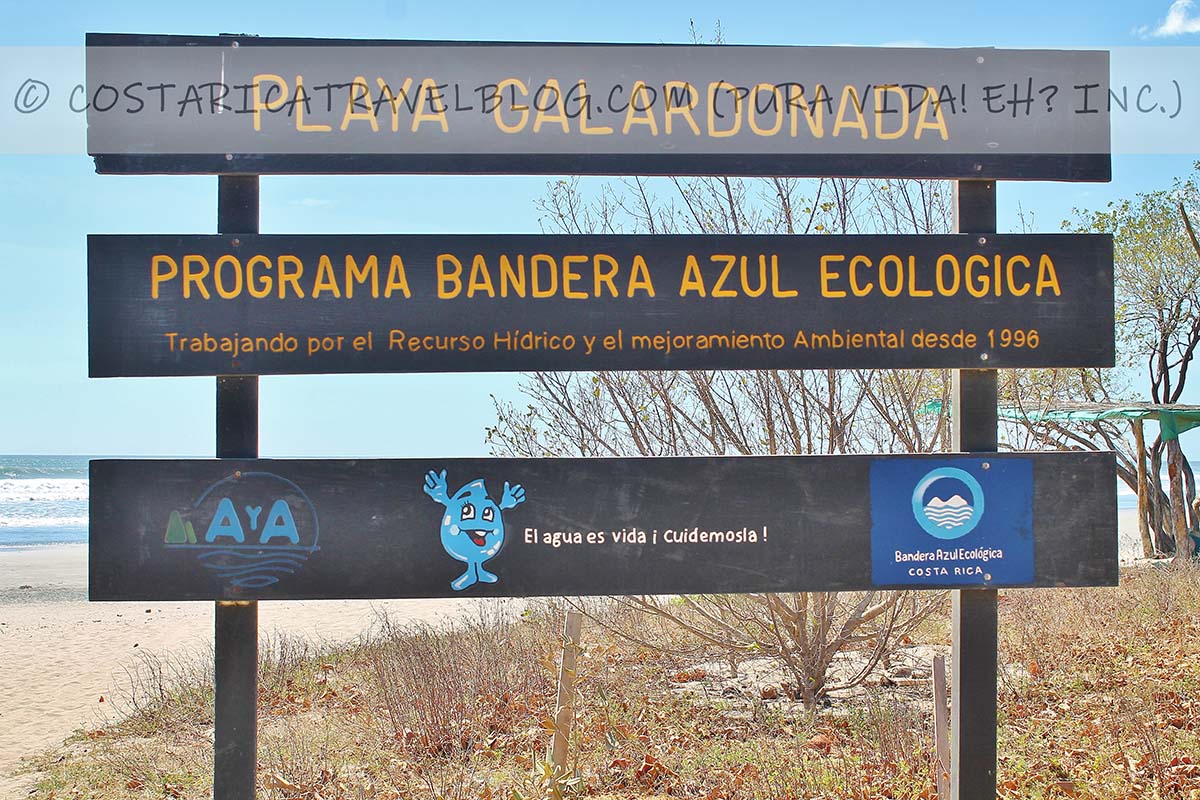
Last updated on August 15th, 2023 at 04:25 pm GMT-6 (Costa Rica time)

Written by Nikki Solano
Nikki is the CEO of Pura Vida! eh? Inc. (Costa Rica Discounts), and the author of the guidebooks Moon Costa Rica (2019, 2021, 2023, and 2025 editions) and Moon Best of Costa Rica (2022 edition) from Moon Travel Guides. Together with her Costa Rican husband, Ricky, she operates the Costa Rica Travel Blog, created the online community DIY Costa Rica, built the Costa Rica Destination Tool, oversees the brand-new (summer 2023) Costa Rica Travel Shop, and designed the Costa Rica Trip Planning 101 E-Course. Also, Nikki wrote the Costa Rica cover feature for Wanderlust Magazine's sustainability-focused Travel Green List issue, showcased Costa Rica destinations and experiences on Rick Steves' Monday Night Travel show and podcast/radio show, and served as the Costa Rica Destination Editor for Essentialist, a luxury travel brand. Want to show your appreciation for her free article below? Thank Nikki here. ❤️️




Get the Costa Rica info you need by browsing our article's TABLE OF CONTENTS:
Costa Rica’s Ecological Blue Flag Program

If you’ve wound up on this page, we’re going to assume you’re an eco-conscious traveler. If so, pat yourself on the back. Now more than ever, it’s necessary that travel become responsible travel so we can keep Costa Rica (and our world) biodiverse and beautiful for generations to come. One way to practice responsible travel in Costa Rica is to opt to visit a blue flag beach—a beach that has earned an actual blue flag by meeting management-, awareness-, and sustainability-focused criteria set forth by the Costa Rican government. Fortunately, there are several accredited, blue flag beaches in Costa Rica for you to choose from.
Although our article below focuses on blue flag (award-winning) beaches in Costa Rica, if you’re open to visiting any beach in Costa Rica, let the beaches in our countrywide beach guide direct you where to go:
How the ecological blue flag program works in Costa Rica
Several countries around the world have adopted a blue flag program, but Costa Rica’s is unique. It can also be a lot to wrap your head around, given that the program is a points system, a star rating system, and a flag system in one. Below is a brief on how Costa Rica’s ecological blue flag program (known locally as the Programa Bandera Azul Ecologica, or BAE for short) works.
The points system
Program accreditation follows a points model, where the earning of 100 points equates to perfect participation in the program. Points are divided into four categories, which the government calls “obligatory parameters:” management approach (45 points), biodiversity training and education (20 points), monitoring and control measures (20 points), and sustainability benefits (15 points). Beach communities must complete specific tasks within each category to earn points for that category. For example, to earn points under the management approach category, a beach community must demonstrate work being done in the field of biodiversity conservation. To earn points under the biodiversity training and education category, a beach community must provide at least three educational activities/trainings that pertain to the topic of biodiversity.
The star rating system
The total number of points earned (out of a possible 100 points) is determined to be the beach community’s compliance percentage. So, if a beach community earns 80/100 points, its compliance percentage is 80%. The compliance percentage, which indicates a beach community’s level of compliance with the criteria set forth under the program’s four categories, is used to determine whether a beach community earns a white star. It’s important to note that a 90-100% compliance percentage is required to earn the first white star, so although one white star is the lowest earning possible under the program, it represents a significant amount of ecological effort.
Beach communities that exceed the “obligatory parameters” set forth by the government (think of these communities as achieving a compliance percentage above 100%) can earn up to four additional white stars, raising the total number of white stars that can be earned under the program to five. As a result, the program’s white stars are essentially a rating system, where the highest-achieving beach communities earn five white stars, and all other beaches fall someplace between zero and four white stars.
Separate from white stars, beach communities can also earn stars in a variety of colors. Colored stars represent ecological action being taken that isn’t already accounted for under the program’s four preset categories. Consider the colored stars an acknowledgment of work being done that falls outside of the government’s key focus areas but is still worthy of recognition. Unlike white stars, colored stars are not ratings, and only one star of each color may be earned. See our charts below to learn the correlation of compliance percentages to white star earnings, as well as the meaning of each colored star.
 White star rating | White star significance |
|---|---|
| 1 white star | • 90-100% compliance with obligatory parameters |
| 2 white stars | • 100% compliance with obligatory parameters • The involvement of external parties (neighbors, communities, companies, municipalities, etc.) in sustainability efforts |
| 3 white stars | • 100% compliance with obligatory parameters • The involvement of external parties (neighbors, communities, companies, municipalities, etc.) in sustainability efforts • The transfer of experience and knowledge to other communities, with a clear benefit to the other communities |
| 4 white stars | • 100% compliance with obligatory parameters • The involvement of external parties (neighbors, communities, companies, municipalities, etc.) in sustainability efforts • The transfer of experience and knowledge to other communities, with a clear benefit to the other communities • Efforts toward the conservation of threatened species in private areas |
| 5 white stars | • 100% compliance with obligatory parameters • The involvement of external parties (neighbors, communities, companies, municipalities, etc.) in sustainability efforts • The transfer of experience and knowledge to other communities, with a clear benefit to the other communities • Efforts toward the conservation of threatened species in private areas • Promotional work that helps other entities obtain accreditation through the blue flag program |
| Colored stars | Colored star ratings | Colored star significance |
|---|---|---|
 | 1 green star | Presence of sustainable homes |
 | 1 gold star | Active participation in protecting micro-watersheds |
 | 1 silver star | Active participation in the Ecolones program, a virtual eco-currency program that pays e-currency for recyclables |
 | 1 pink star | Development of sustainable actions for coastal activities |
 | 1 orange star | Raising awareness of animal welfare issues |
 | 1 purple star | Prevention and reduction of food waste |
The flag system
Although it’s referred to as a flag program (specifically, a blue flag program), as we’ve detailed above, Costa Rica’s ecological blue flag program is more of a points and ratings program. Regardless, here’s where the “flag” aspect comes into play: when a beach earns stars under the program, they’re awarded an actual blue flag. (Consider it a tangible symbol of the success they’ve found under the program.) Some beach communities fly their flag directly on the beach and others do not, so don’t expect to see flags everywhere, and don’t count out a particular beach as an accredited beach if you don’t spot a flag there. The best way to know whether a beach you wish to visit has earned a blue flag is to see the list of accredited beaches provided further down in this article.
Note: Some beaches display a wooden sign (like the one pictured at the top of this article) that reads Playa Galardonada. In English, Playa Galardonada translates to “Award-Winning Beach.” (Spoiler alert! Now you know that Playa Galardonada isn’t the name of a Costa Rican beach.) You wouldn’t believe how many photos on the internet (sadly, some uploaded by Costa Rica “experts”) are captioned erroneously as Playa Galardonada!
Costa Rica’s ecological blue flag program: a quick summary
If you don’t have time to read the full explanation above, or if you read the full explanation but want clarification, here’s the key takeaway regarding Costa Rica’s ecological blue flag program:
The program encourages beach communities to take ecological action. Every beach that earns one white star is backed by a community that has achieved 90-100% compliance with the government’s list of recommended ecological actions. The more white stars (to a maximum of five white stars) and the more colored stars (to a maximum of 1 star per color) that a beach earns, the more its community is being eco-friendly.
Costa Rica’s ecological blue flag program: bias to be aware of
Before we get to disclosing Costa Rica’s most-recent blue flag recipients, here’s a quick disclaimer and a warning regarding the program’s inherent bias:
Blue flag beaches represent beach communities that are working to preserve our environment. They aren’t necessarily the most popular beaches in Costa Rica, the most beautiful beaches in Costa Rica, or the most recommended beaches to visit in Costa Rica. They are, however, the best beaches to visit if you aim to support beach communities that are working toward positive ecological ends.
Blue flag beaches represent beach communities that are working to preserve our environment… because they have the means to apply for the blue flag program and meet the program’s strict requirements. Like involvement in any accreditation program, it takes resources to meet the requirements of Costa Rica’s ecological blue flag program, and not every community has those resources (especially money). As a result, the program’s winning beaches slant toward the Guanacaste region, one of the wealthiest regions of Costa Rica, with four of the top six elite beaches belonging to the Papagayo Peninsula, a part of Costa Rica that’s known for its high-quality resorts and vacation homes, which attract celebrities and other big spenders. (One has to wonder whether some of the properties took interest in the program and developed more eco-friendly beach areas to embrace the trend of going “green” and appeal more to contemporary individuals.) The other two elite beaches in the group are found in areas where there is a large population of expats, so resources/money wouldn’t be tough to gather there either. Fortunately, small, modest beach communities have managed to earn blue flags, so the program isn’t just for the rich, but surely money and other resources play a significant role in a beach community’s ability to meet, and especially surpass, the program’s standards.
The most-recent award-winning beaches in Costa Rica (2022 winners)
The most recent group of blue flag recipients (2022 winners, announced in 2023) is a group of 136 beaches that line Costa Rica’s Pacific and Caribbean coasts. The majority of beaches (111, to be exact) earned one white star under the program (the minimum number of stars needed to receive accreditation under the program). A total of 25 beaches went above and beyond to earn more than one white star (either two, three, four, or five white stars, or one white star and at least one colored star), and among this group, an elite six beaches earned a perfect rafting of 5/5 white stars. (Each elite earner also earned one colored star.) The breakdown of award-winning beaches by region of Costa Rica is as follows:
- Northern Pacific / Guanacaste: 45 blue flag beaches
- Nicoya Peninsula (Pacific): 32 blue flag beaches
- Central Pacific: 32 blue flag beaches
- Caribbean: 14 blue flag beaches
- Southern Pacific / Osa Peninsula: 13 blue flag beaches
Map of blue flag beaches in Costa Rica
Use our map below to find blue flag beaches in Costa Rica. Beaches that earned one white star under the program are marked on the map in blue. Beaches that earned more than one white star under the program are marked on the map in green, and the elite six beaches in this group that earned a perfect 5/5 white star rating are marked on the map in red.
25 exemplary blue flag beaches in Costa Rica
Below is a list of the 25 beaches that earned more than one white star under the program. The beaches are listed in order of their accreditation, beginning with the six elite earners (beaches that earned 5/5 white stars) and ending with beaches that received two stars (either two white stars or one white star and one colored star). One-star earners are discussed at the bottom of our article. As a reminder, our charts above explain the significance of white and colored stars.
Playa Blanca
Playa Blanca is located in the Northern Pacific / Guanacaste region of Costa Rica. It sits on the east side of Costa Rica’s Papagayo Peninsula and fronts part of the Four Seasons, a popular beach resort.

Playa Prieta
Playa Prieta is located in the Northern Pacific / Guanacaste region of Costa Rica. It sits on the west side of Costa Rica’s Papagayo Peninsula.

Playa Sombrero
Playa Sombrero is located in the Northern Pacific / Guanacaste region of Costa Rica. It sits on the east side of Costa Rica’s Papagayo Peninsula.

Playa Virador
Playa Virador is located in the Northern Pacific / Guanacaste region of Costa Rica. It sits on the west side of Costa Rica’s Papagayo Peninsula and fronts part of the Four Seasons, a popular beach resort. To learn more about Playa Virador, including beach details, development, safety, access, parking, and more, see our related blog post: Photos of Playa Virador Costa Rica (Guanacaste) From Our Own Personal Collection.

Playa Blanca
Playa Blanca is located in the Central Pacific region of Costa Rica. It sits south of the coastal community of Tarcoles, Costa Rica. To learn more about Playa Blanca, including beach details, development, safety, access, parking, and more, see our related blog post: Photos of Playa Blanca Costa Rica (Central Pacific) From Our Own Personal Collection.

Playa Esterillos Oeste
Playa Esterillos Oeste is located in the Central Pacific region of Costa Rica. It fronts the coastal community of Esterillos Oeste, Costa Rica.

Playa Jobo
Playa Jobo is located in the Northern Pacific / Guanacaste region of Costa Rica. It fronts the popular beach resort Dreams Las Mareas.

Puerto Vargas
Puerto Vargas is located in the Caribbean region of Costa Rica. It sits east of the coastal community of Cahuita, Costa Rica, and falls within the boundary of the Cahuita National Park. You must pay the national park entrance fee (when one applies) to access this beach.

Playa Cabuyal
Playa Cabuyal is located in the Northern Pacific / Guanacaste region of Costa Rica. It sits just north of Costa Rica’s Papagayo Peninsula.

Playa Espadilla Sur
Playa Espadilla Sur is located in the Central Pacific region of Costa Rica. It sits south of the coastal community of Manuel Antonio, Costa Rica, and falls within the boundary of the Manuel Antonio National Park. You must pay the national park entrance fee to access this beach.

Playa Manuel Antonio
Playa Manuel Antonio is located in the Central Pacific region of Costa Rica. It sits south of the coastal community of Manuel Antonio, Costa Rica, and falls within the boundary of the Manuel Antonio National Park. You must pay the national park entrance fee to access this beach. To learn more about Playa Manuel Antonio, including beach details, development, safety, access, parking, and more, see our related blog post: Photos of Playa Manuel Antonio Costa Rica (Central Pacific) From Our Own Personal Collection.

Playa Conchal
Playa Conchal is located in the Northern Pacific / Guanacaste region of Costa Rica. It sits south of the coastal community of Brasilito, Costa Rica.

Playa Quiribri
Playa Quiribri is located in the Caribbean region of Costa Rica. It sits on Isla Quiribri, otherwise known as Isla Uvita, just offshore from the port city of Limon.

Puerto Carrillo
Playa Carrillo is located in the Nicoya Peninsula region of Costa Rica. It sits east of the coastal community of Samara, Costa Rica.

Punta Mala
Punta Mala is located in the Central Pacific region of Costa Rica. It sits west of the coastal community of Esterillos Oeste, Costa Rica.

Playa Avellanas
Playa Avellanas (sometimes cited as Playa Avellana) is located in the Northern Pacific / Guanacaste region of Costa Rica. It sits south of the coastal community of Tamarindo, Costa Rica.

Playa Caletas
Playa Caletas is located in the Nicoya Peninsula region of Costa Rica. It sits roughly halfway between the coastal communities of Punta Islita (to the north) and Santa Teresa (to the south), Costa Rica.

Playa Grande
Playa Grande (also known as Playa Manzanillo) is located in the Caribbean region of Costa Rica. It fronts the coastal community of Manzanillo, Costa Rica. To learn more about Playa Manzanillo, including beach details, development, safety, access, parking, and more, see our related blog post: Photos of Playa Manzanillo Costa Rica (Caribbean) From Our Own Personal Collection.

Playa Flamingo
Playa Flamingo is located in the Northern Pacific / Guanacaste region of Costa Rica. It fronts the coastal community of Playa Flamingo, Costa Rica.

Playa Tortuguero
Playa Tortuguero is located in the Caribbean region of Costa Rica. It fronts the coastal community of Tortuguero, Costa Rica.

Playa Playitas
Playa Playitas is located in the Central Pacific region of Costa Rica. It fronts part of the coastal community of Manuel Antonio, Costa Rica, and is considered a northwest extension of Manuel Antonio’s principal beach, Playa Espadilla Norte.

Playa Cocles
Playa Cocles is located in the Caribbean region of Costa Rica. It sits east of the coastal community of Puerto Viejo de Talamanca, Costa Rica.

Playa Punta Uva
Playa Punta Uva is located in the Caribbean region of Costa Rica. It sits east of the coastal community of Puerto Viejo de Talamanca, Costa Rica.

Playa Arenilla
Playa Arenilla is located in the Northern Pacific / Guanacaste region of Costa Rica. It fronts the popular beach resort Secrets Papagayo.

Playa Nacascolo
Playa Nacascolo is located in the Northern Pacific / Guanacaste region of Costa Rica. It sits on the east side of Costa Rica’s Papagayo Peninsula. To learn more about Playa Nacascolo, including beach details, development, safety, access, parking, and more, see our related blog post: Photos of Playa Nacascolo Costa Rica (Guanacaste) From Our Own Personal Collection.

Photos of our favorite exemplary blue flag beaches in Costa Rica
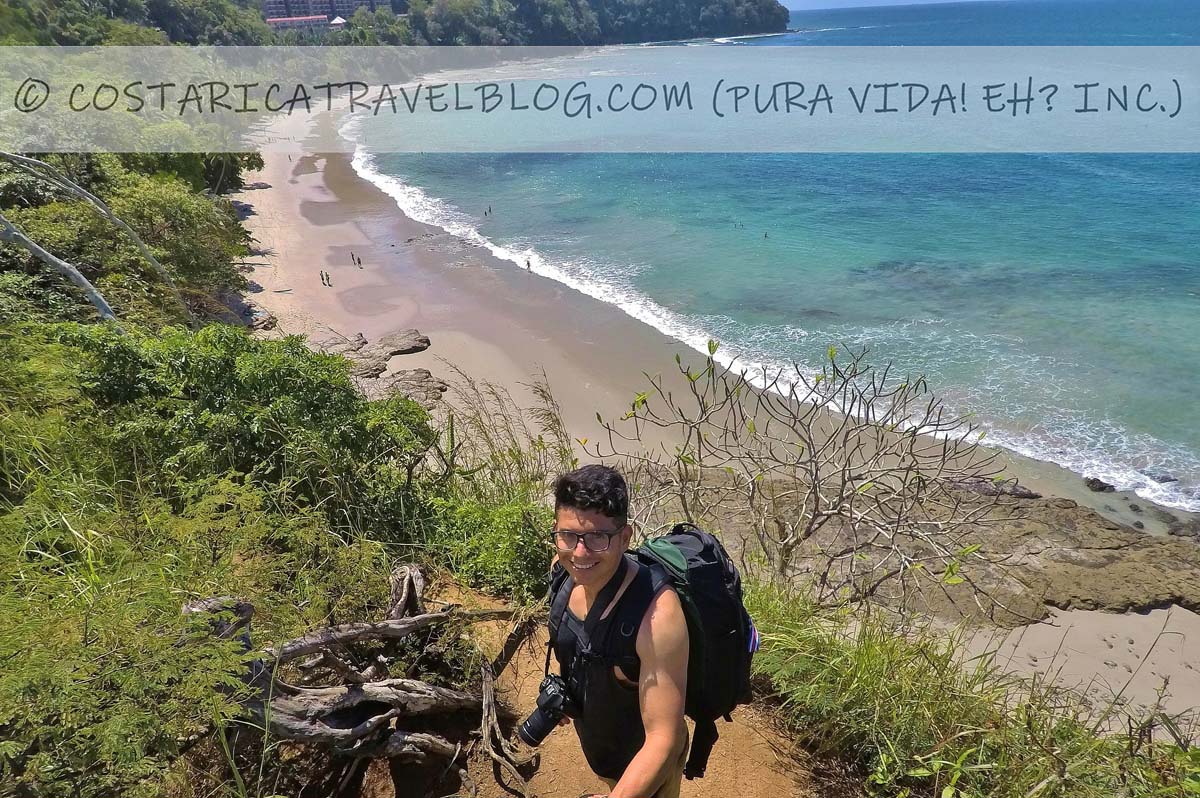
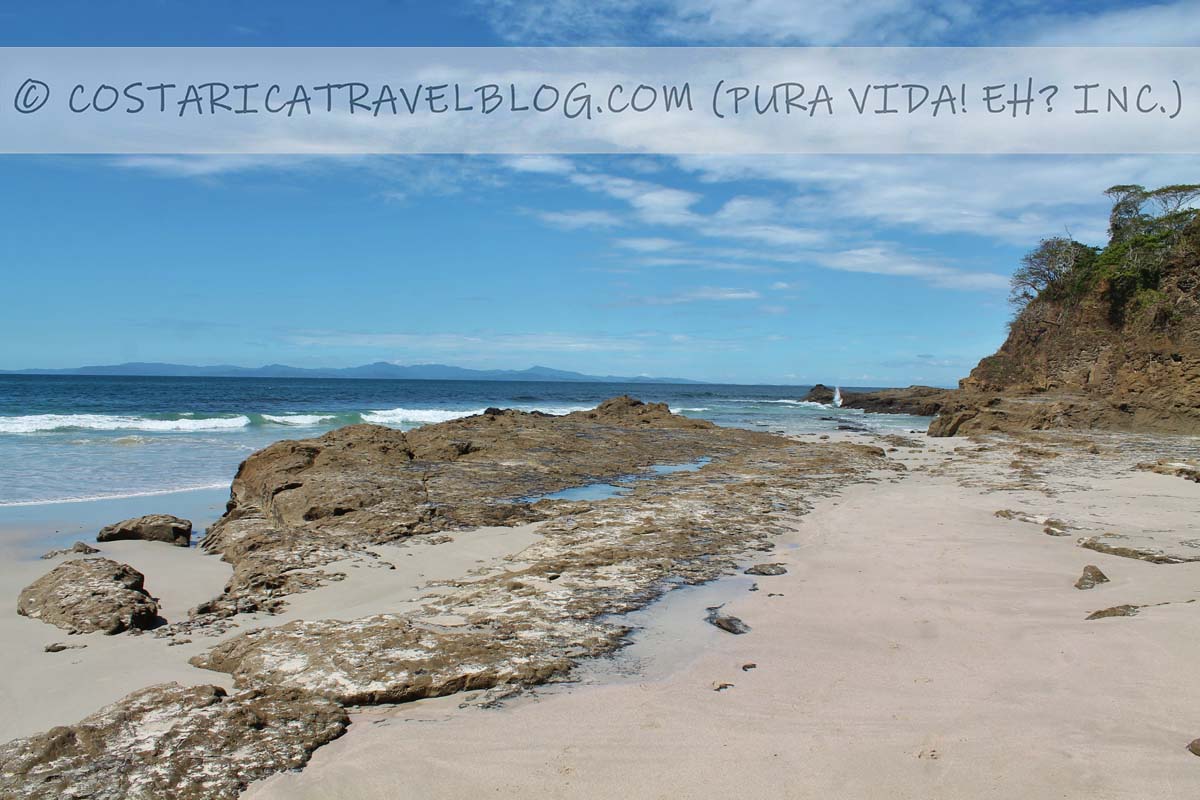
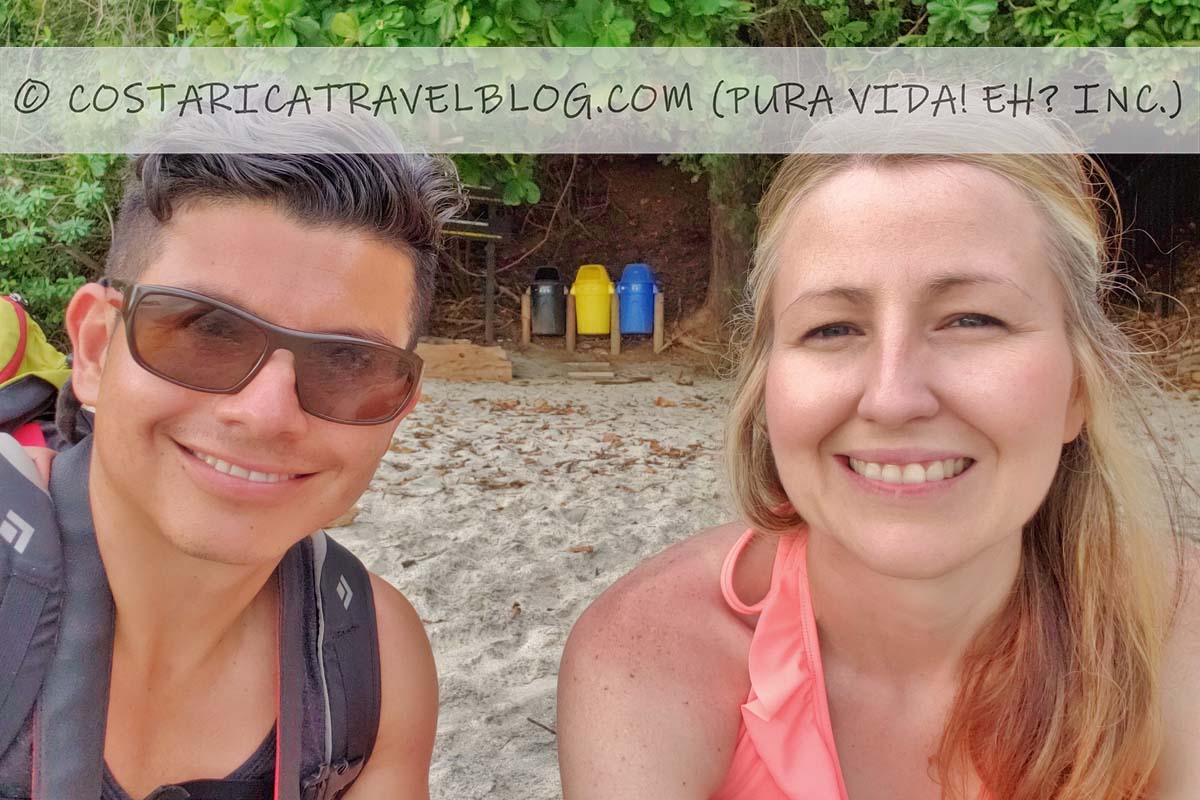



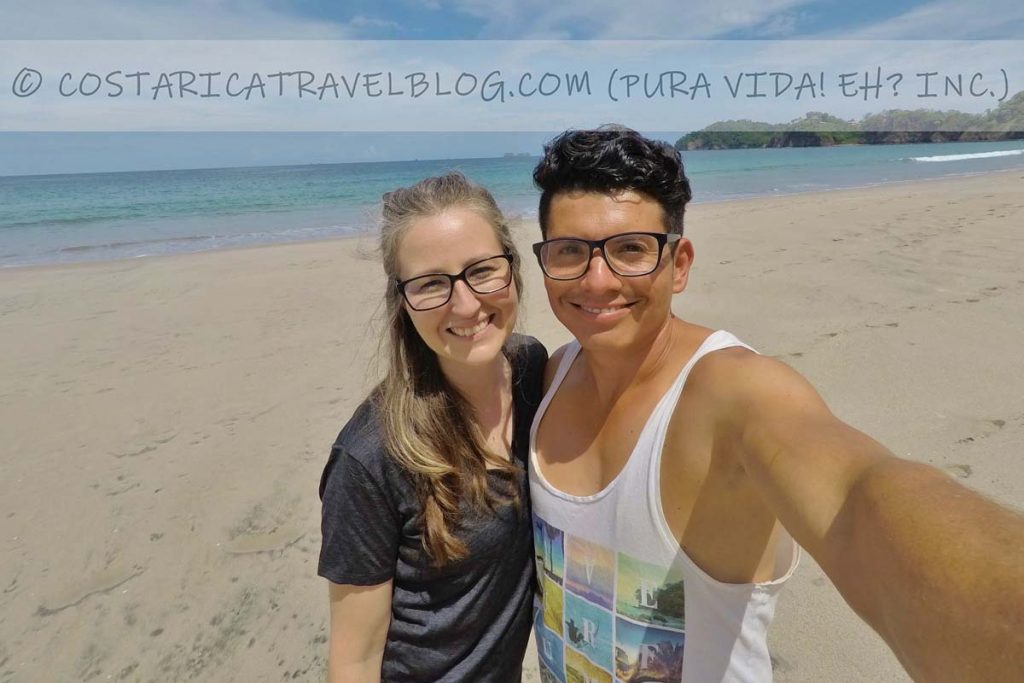
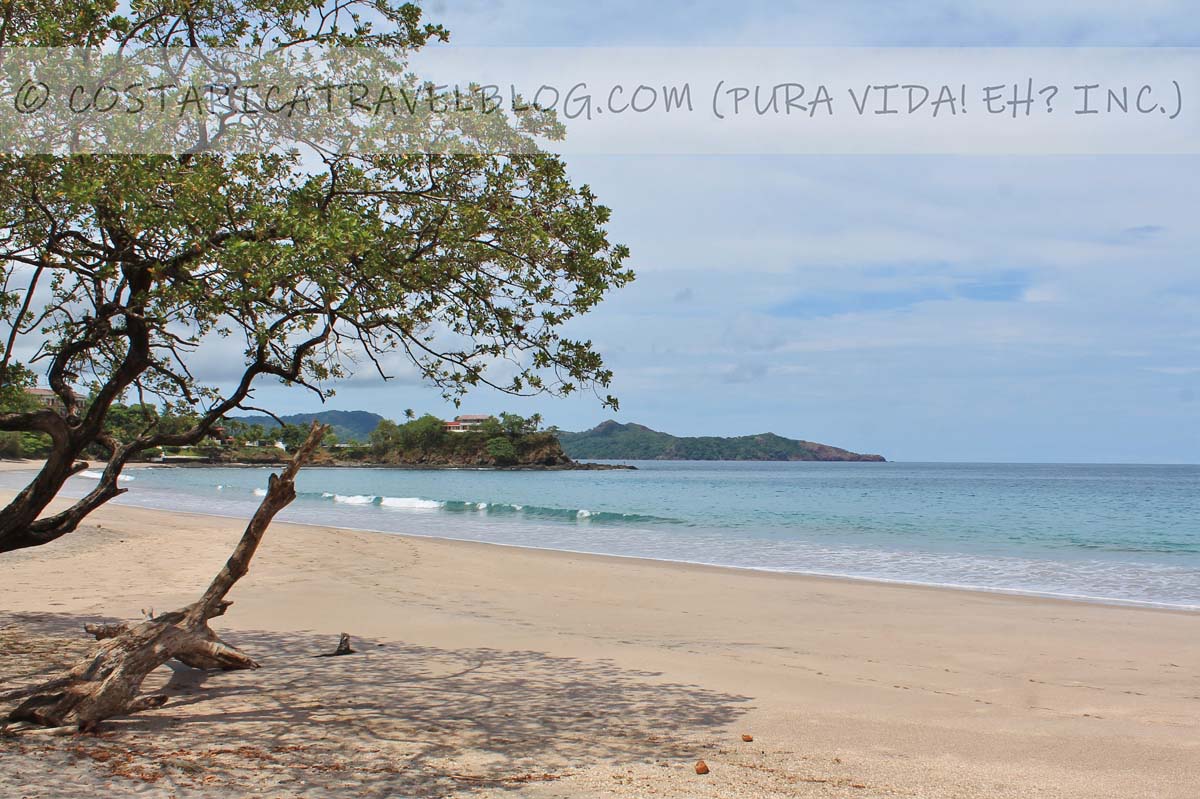
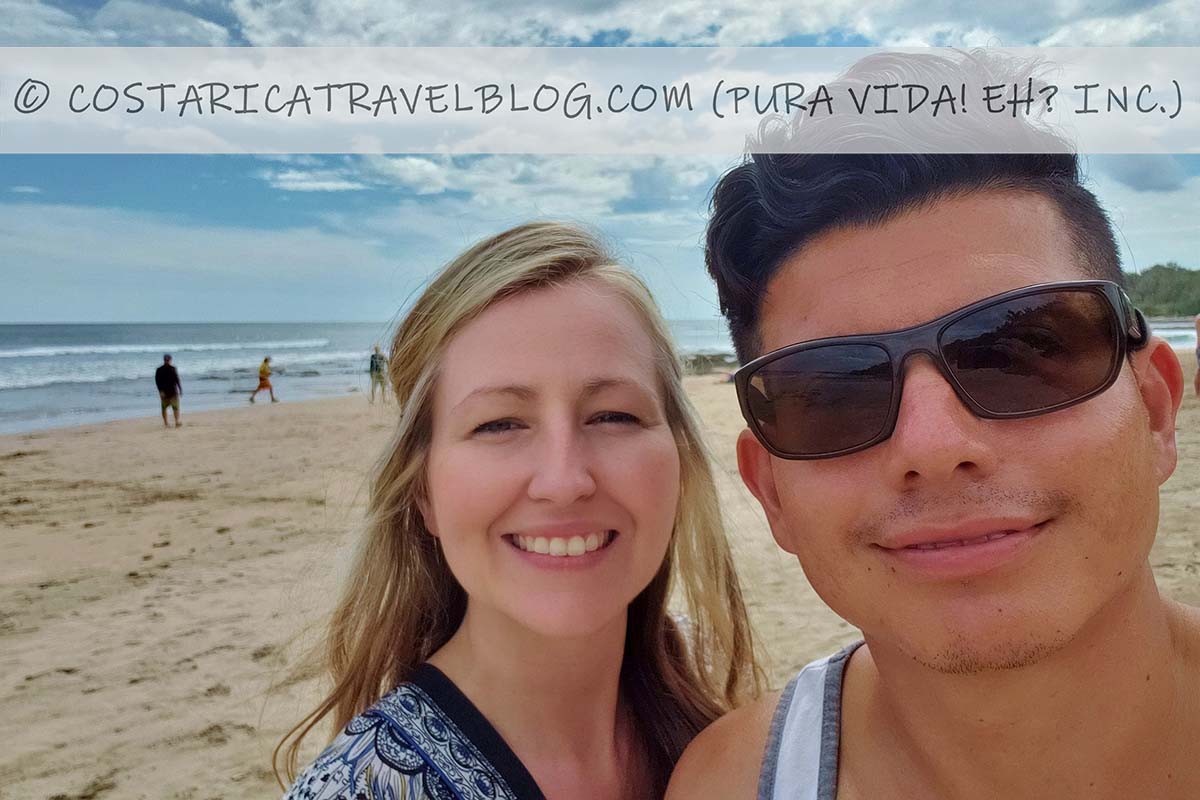
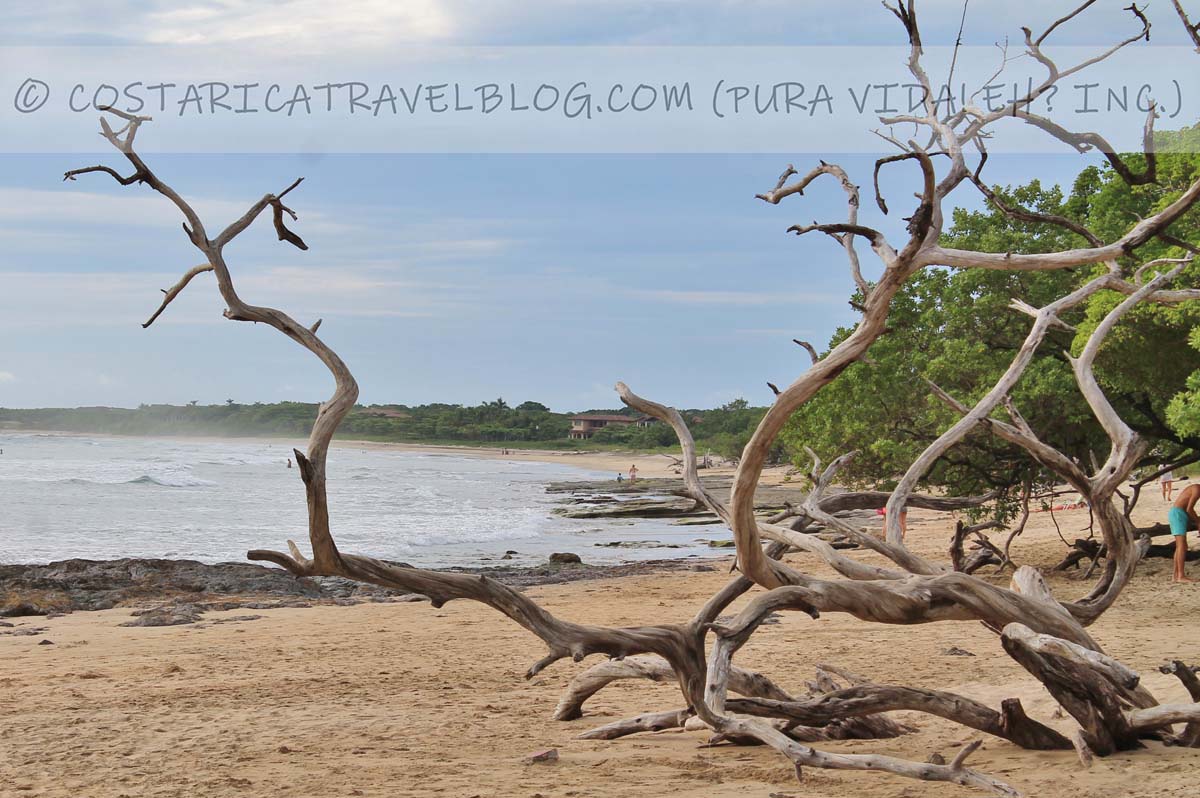
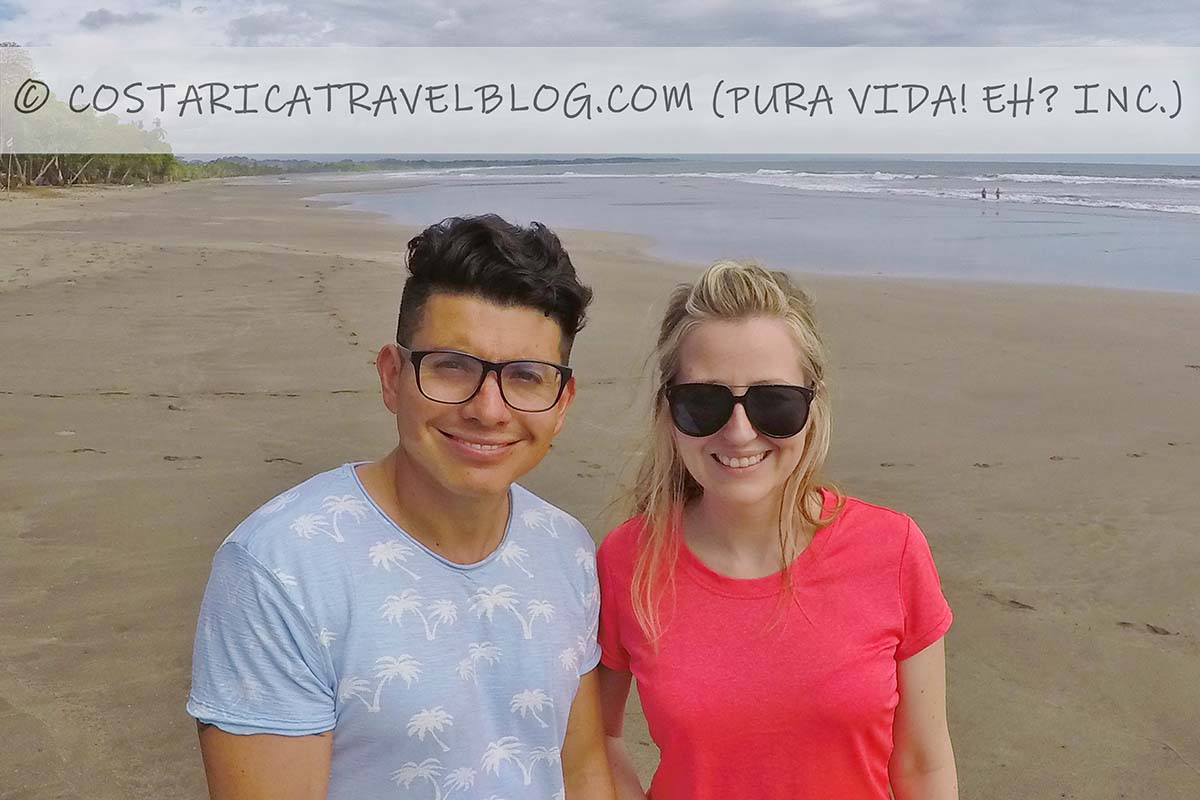



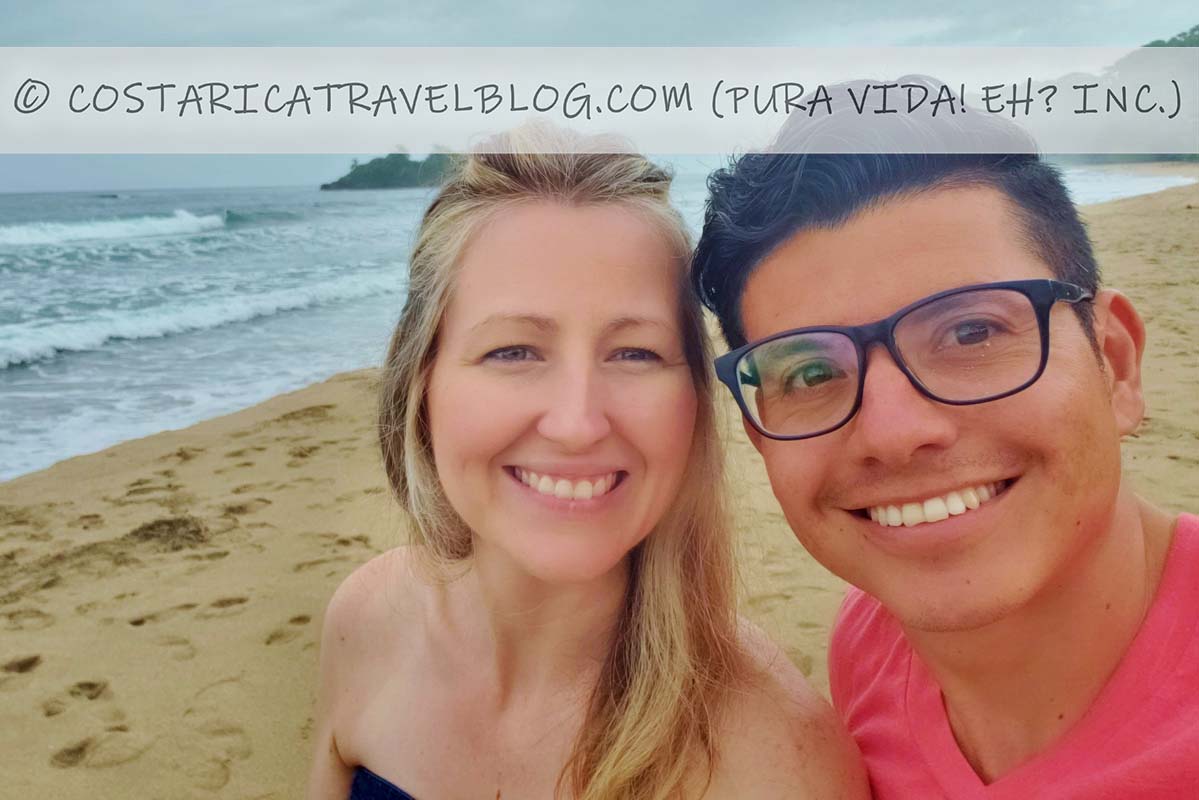

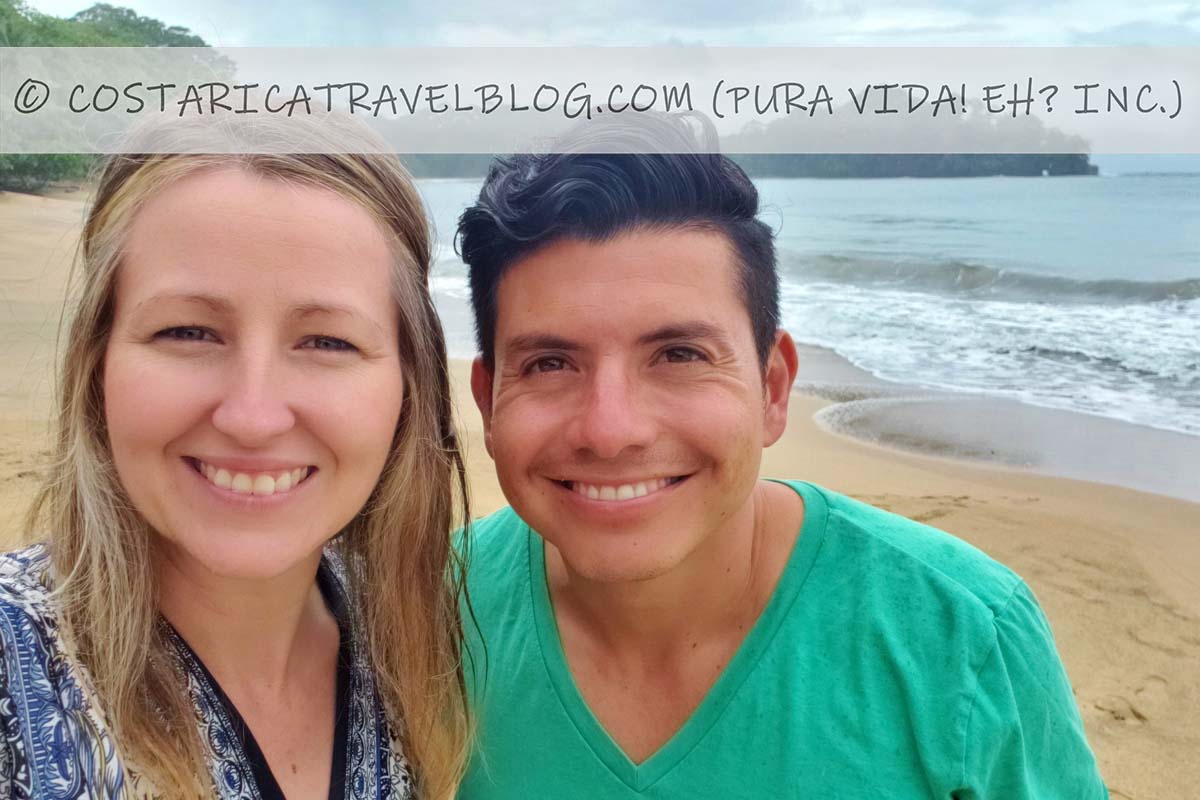

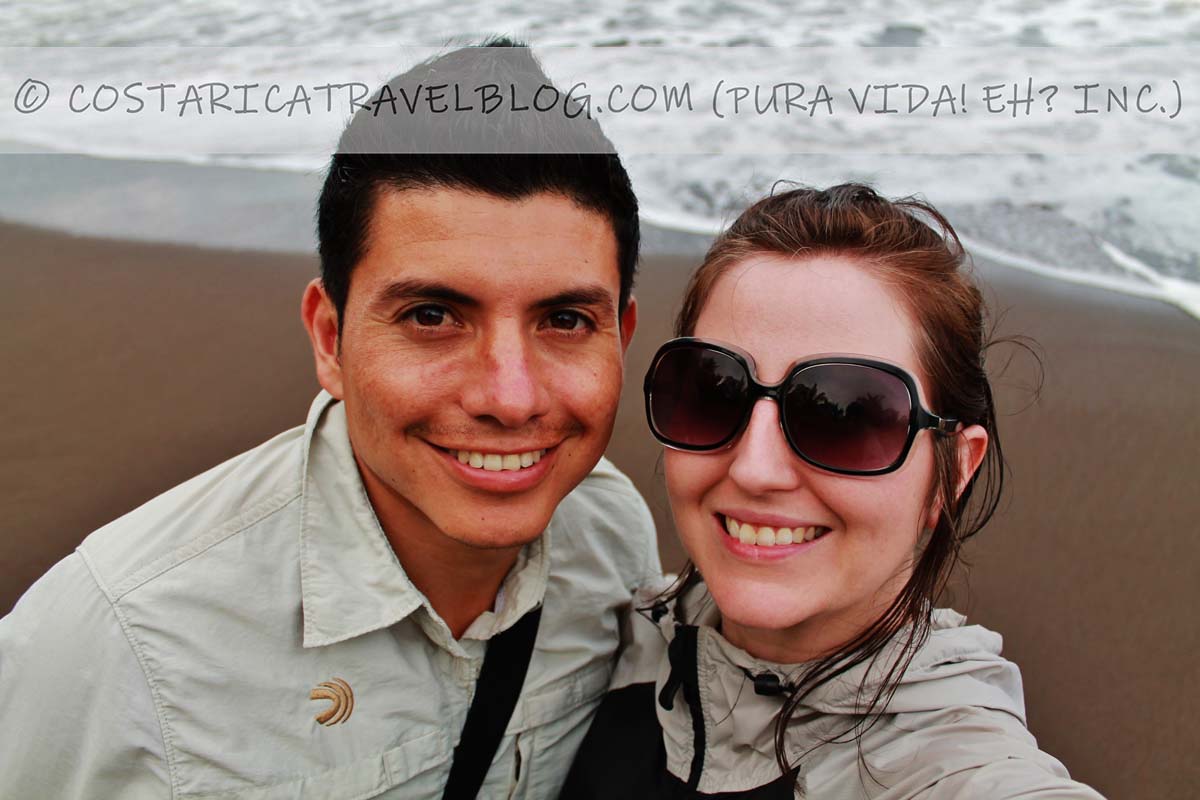
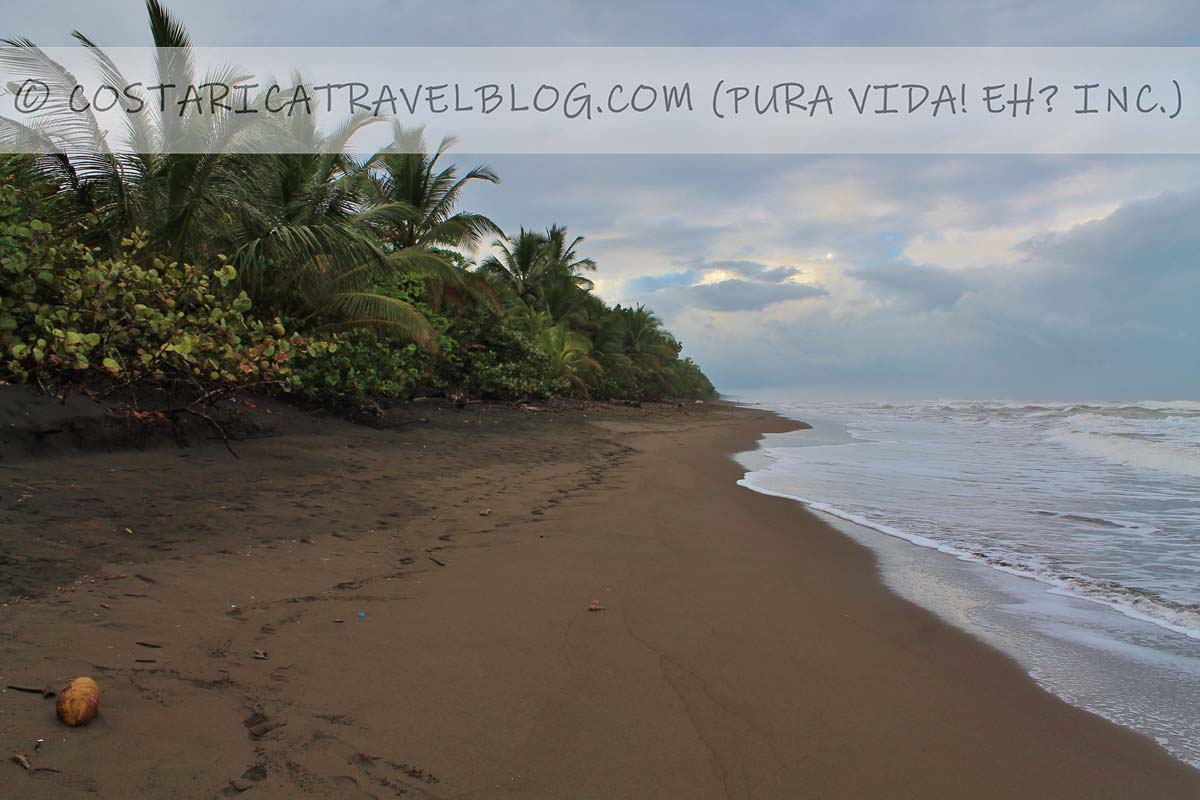
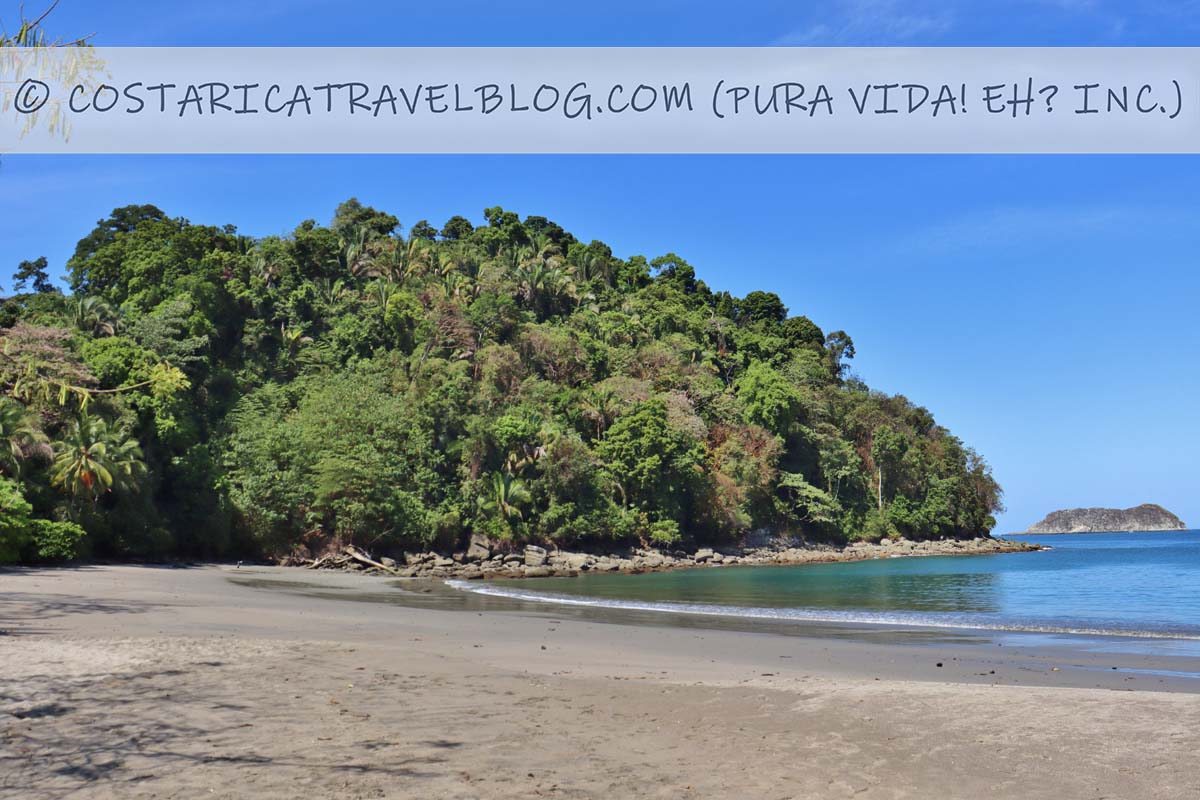

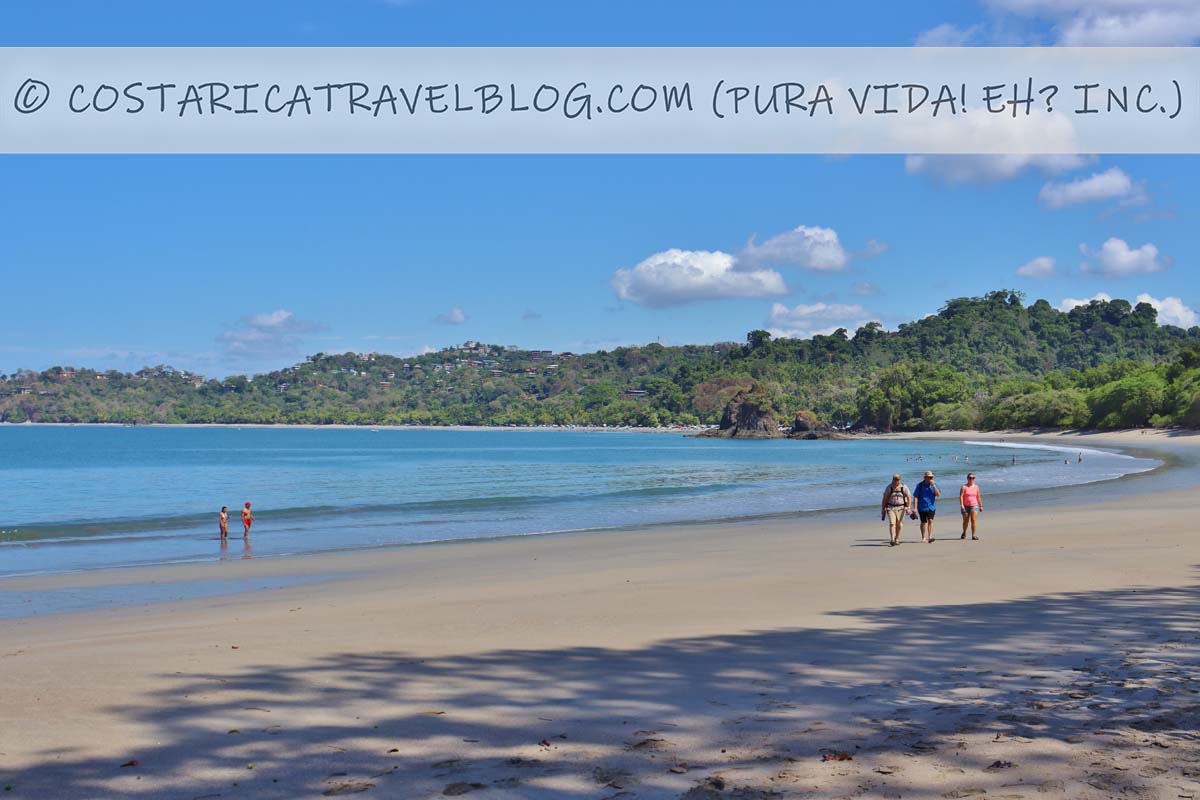

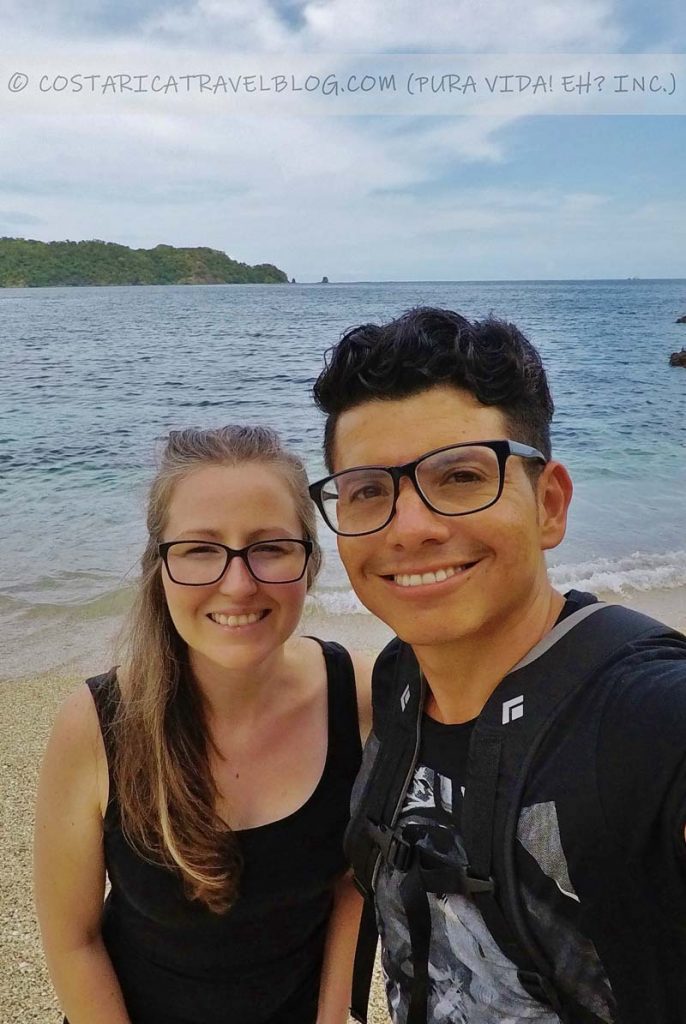
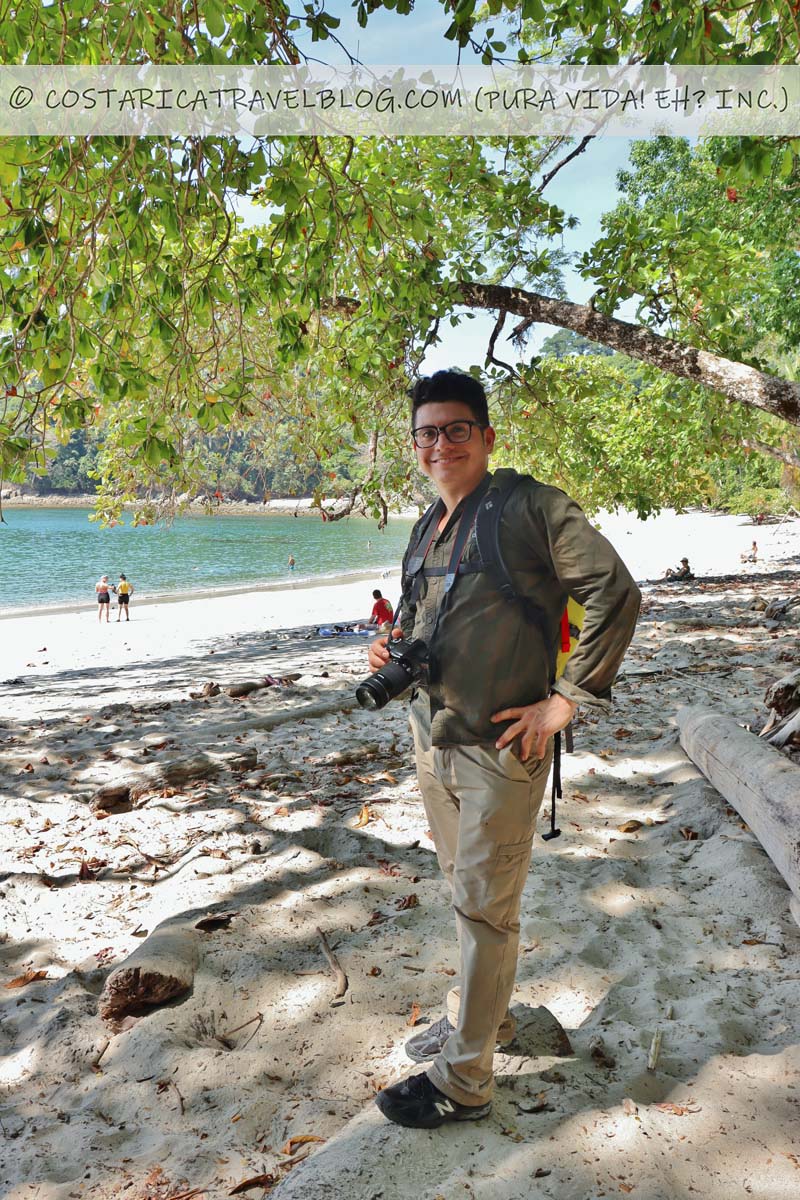
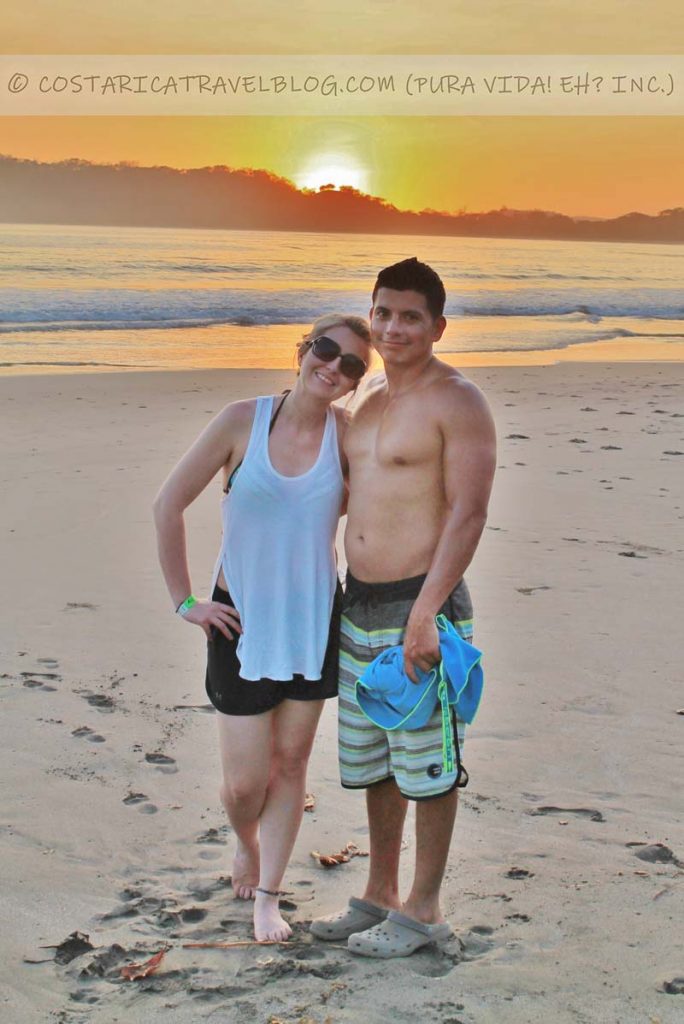
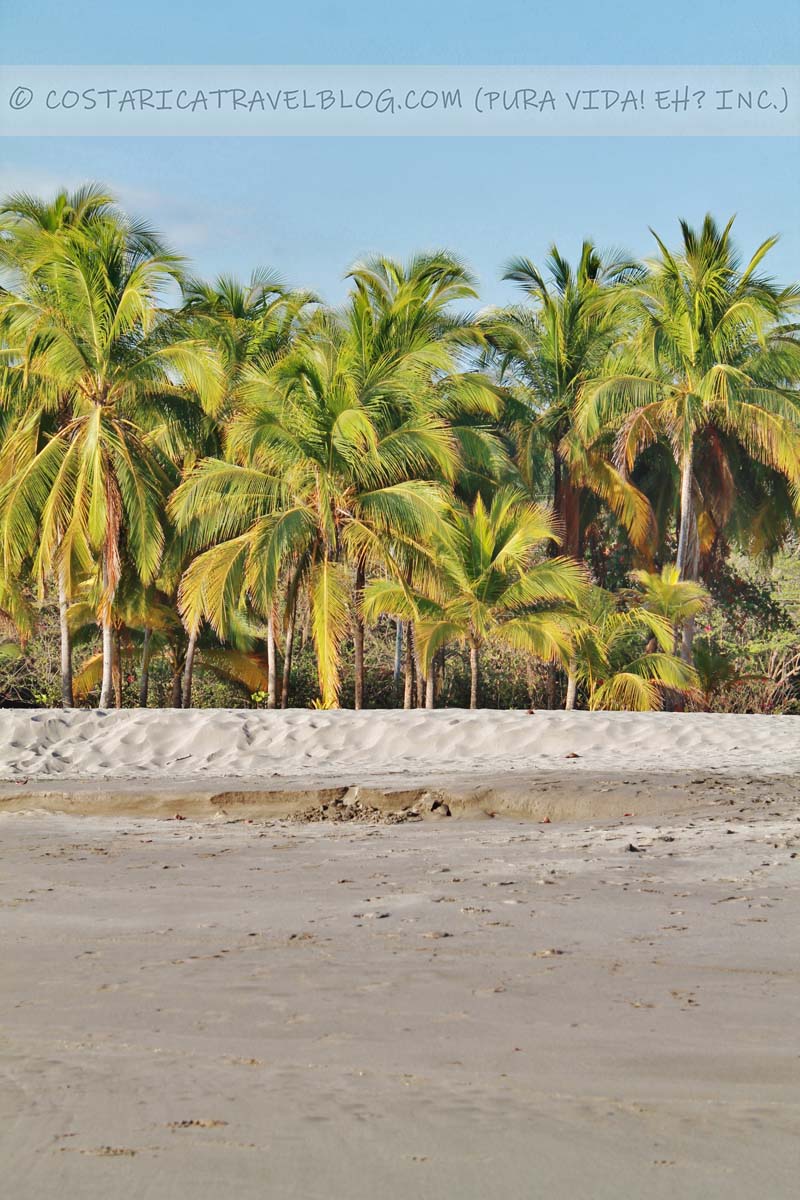
100+ one-star blue flag beaches in Costa Rica

Although we aren’t going to list all 111 of the beaches that earned one white star (more than half are remote beaches that only a fraction of off-the-beaten-path explorers would visit), we did create a chart that lists 40 of the most popular beaches to earn one white star under Costa Rica’s ecological blue flag program. So, if you want to visit an award-winning beach but you aren’t able (or don’t want) to visit one of the 25 exemplary beaches listed above, stick with one of the beaches named below.
| Region of Costa Rica | Beaches that earned one star |
|---|---|
| Northern Pacific / Guanacaste | Playa Rajada, Playa Copal, Playa Hermosa, Playa Ocotal, Playa Matapalo, Playa Langosta, Playa Potrero, Playa Grande, Playa Ventanas, Playa Junquillal, and Playa Brasilito |
| Nicoya Peninsula (Pacific) | Playa Tropical, Playa Quesera, Playa Curu, Playa Montezuma, Playa Tambor, Playa Quizales, Playa Hermosa, Playa Malpais, Playa Santa Teresa, Playa Garza, Playa Guiones, Playa Nosara, Playa Pelada, Punta Islita, and Playa Ostional |
| Central Pacific | Playa Mantas, Playa Herradura, Playa Hermosa, Playa Esterillos Centro, Playa Biesanz, Playa Espadilla Norte, and Playa Gemelas |
| Caribbean | Playa Grande, Playa Blanca, Playa Negra, and Playa Gandoca |
| Southern Pacific / Osa Peninsula | Playa Ballena, Playa Punta Uvita, and Playa Dominical |
Photos of our favorite one-star blue flag beaches in Costa Rica
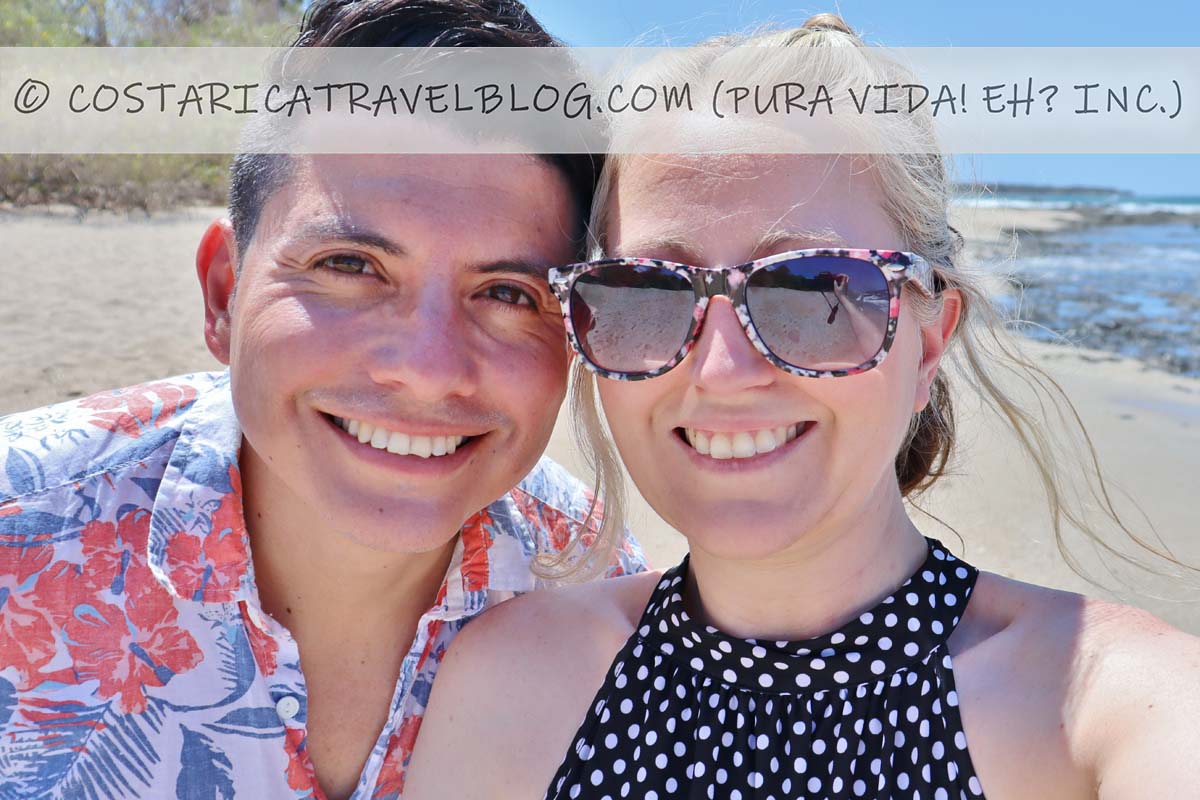

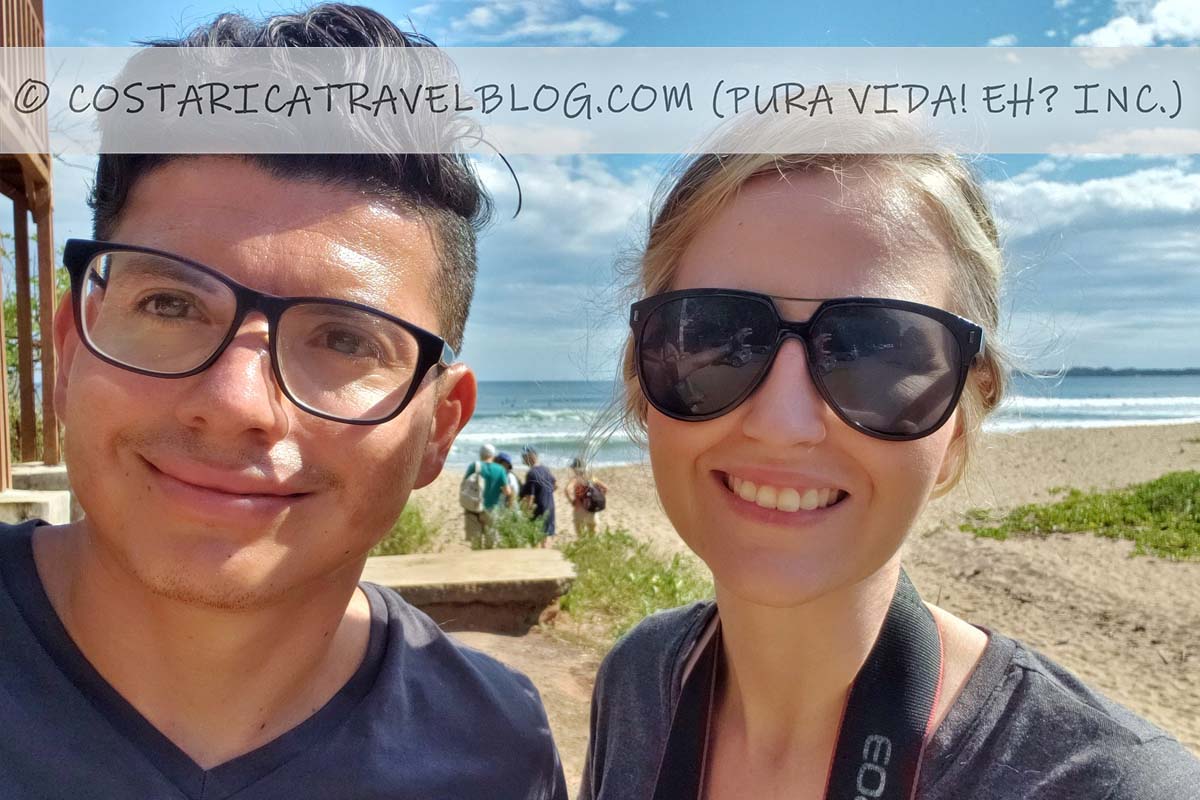
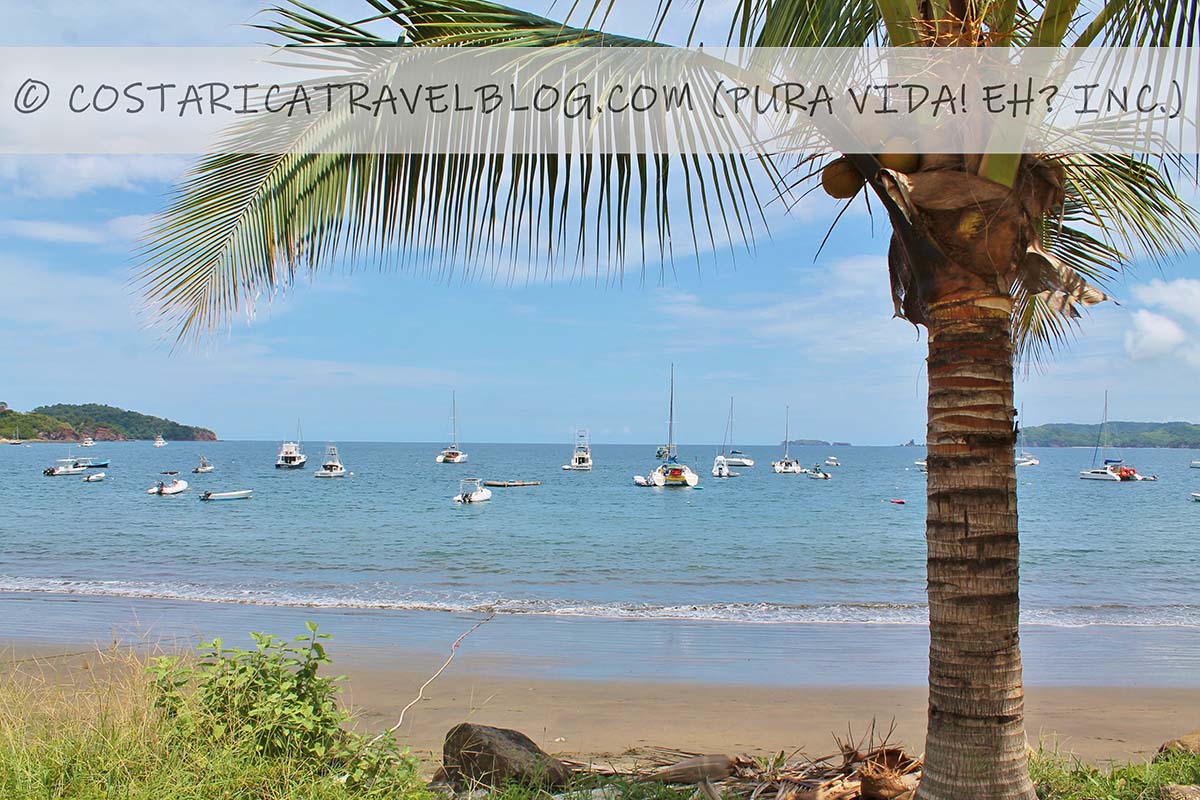
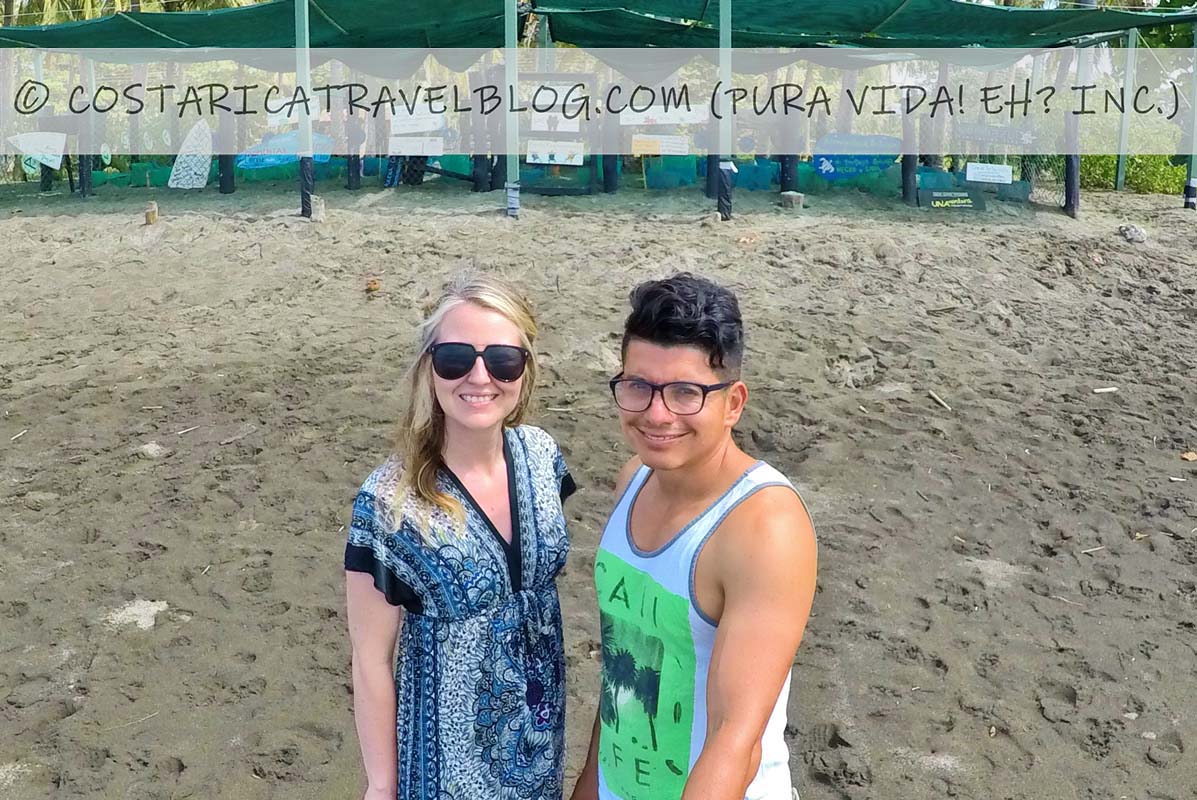

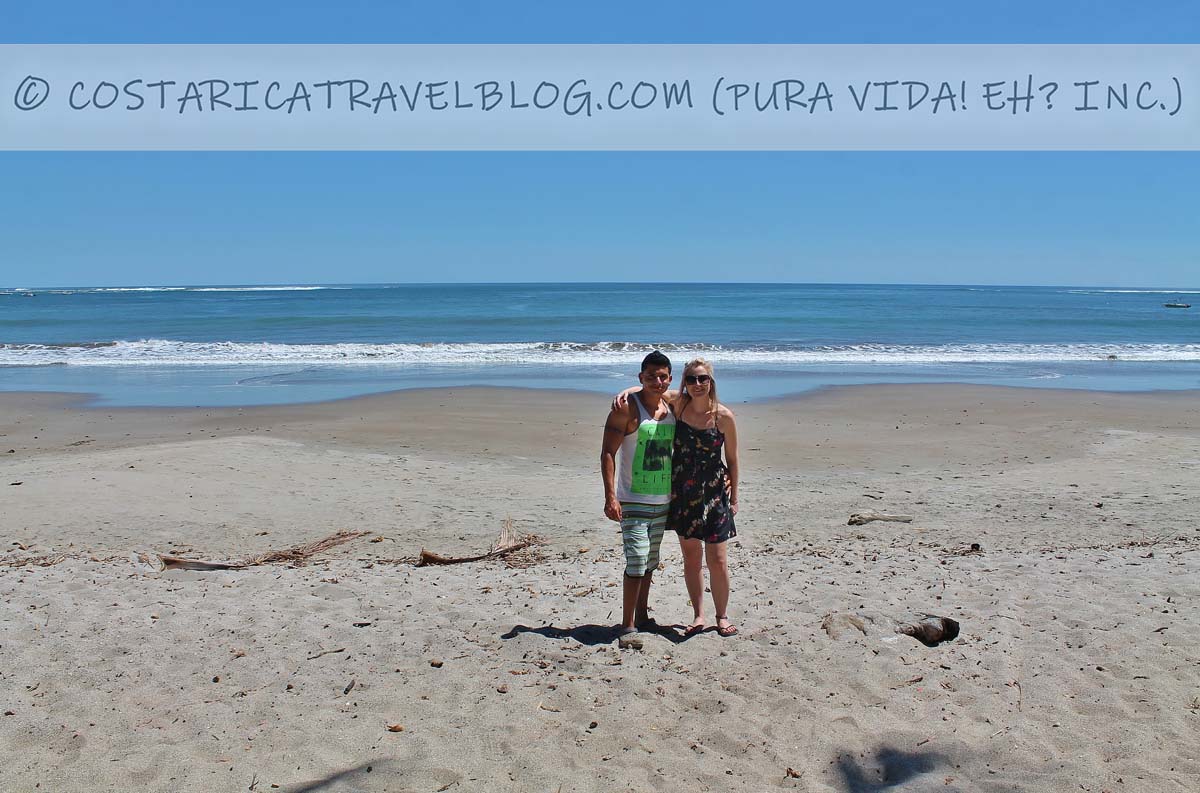
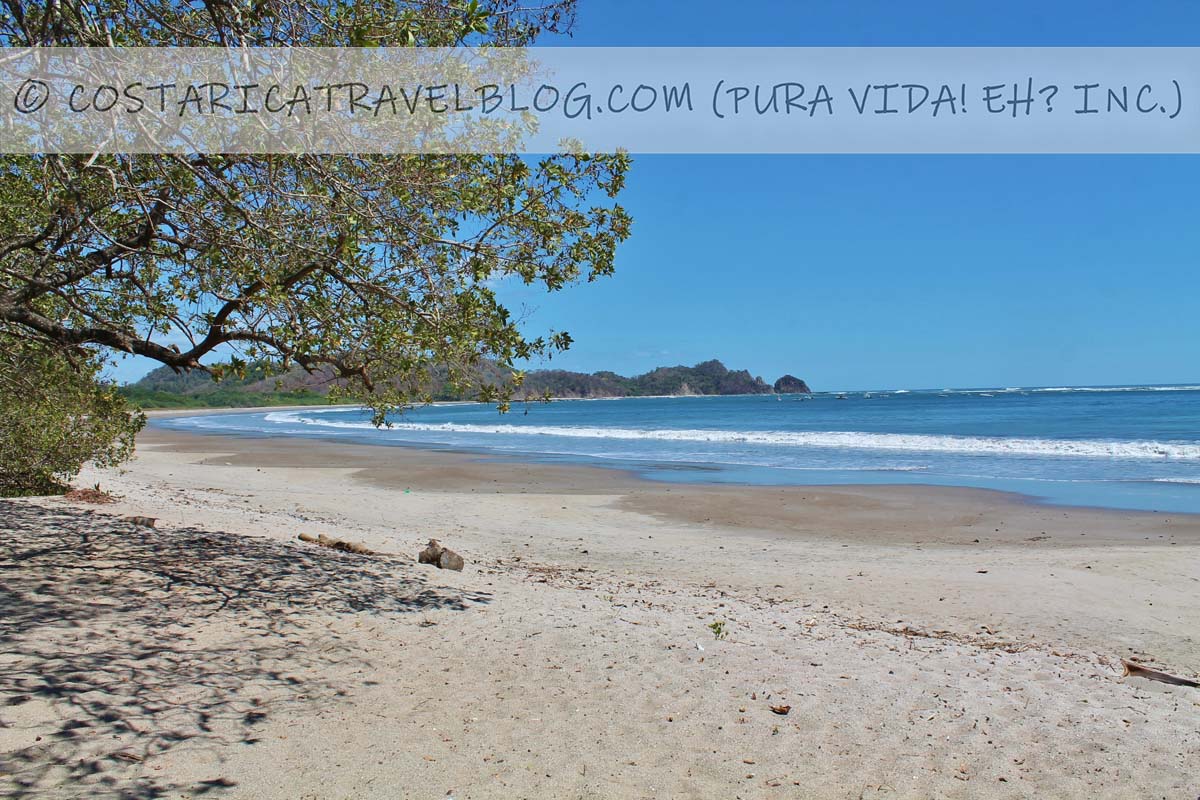
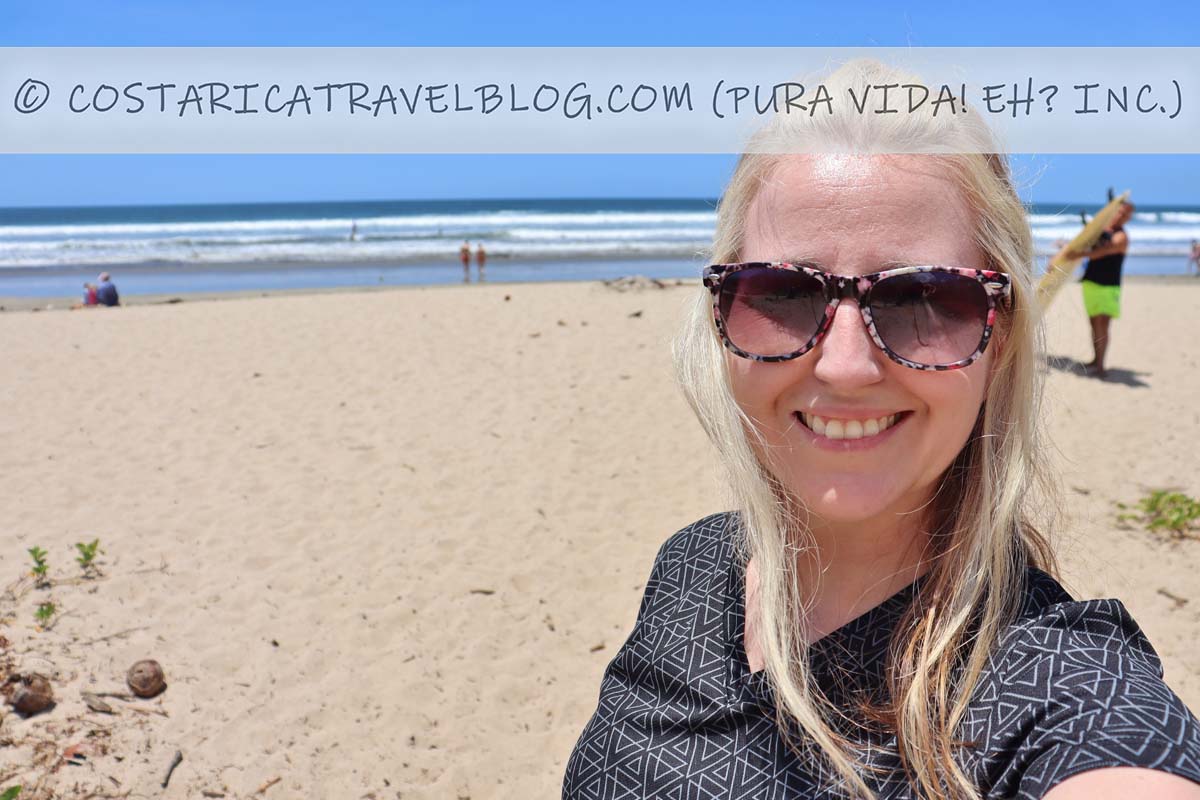
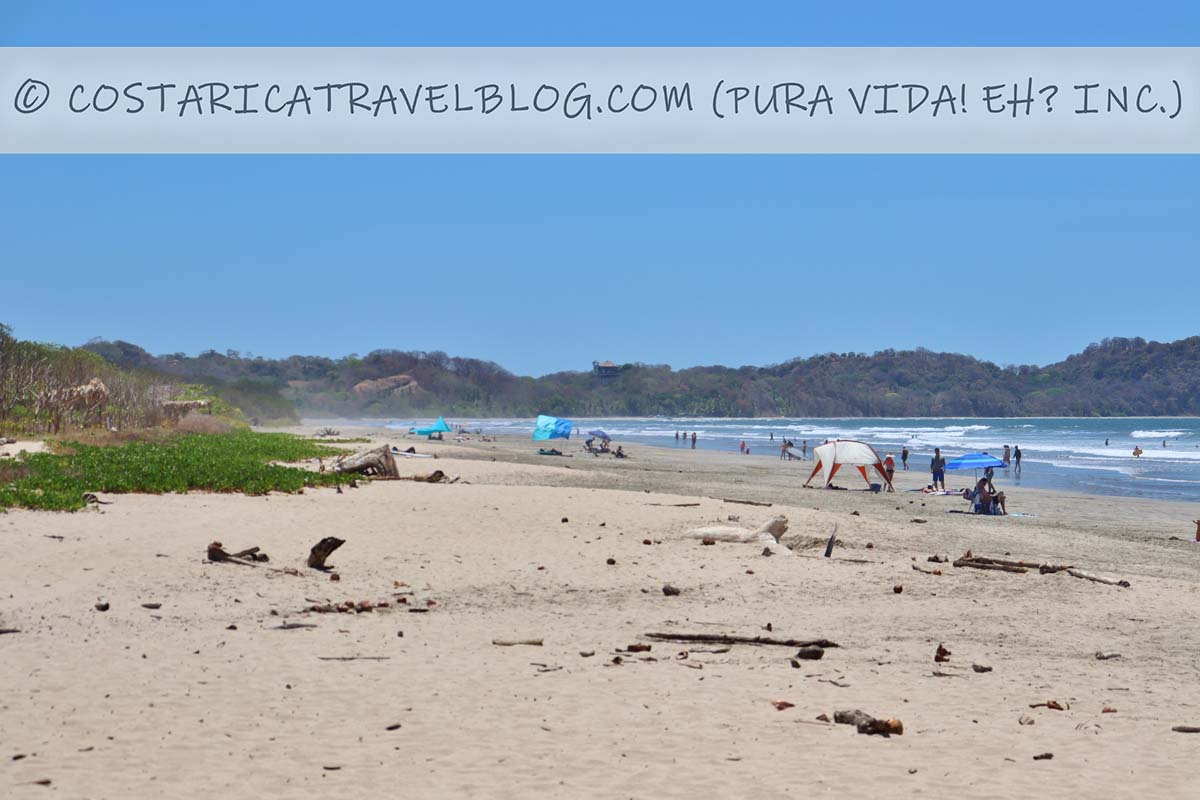
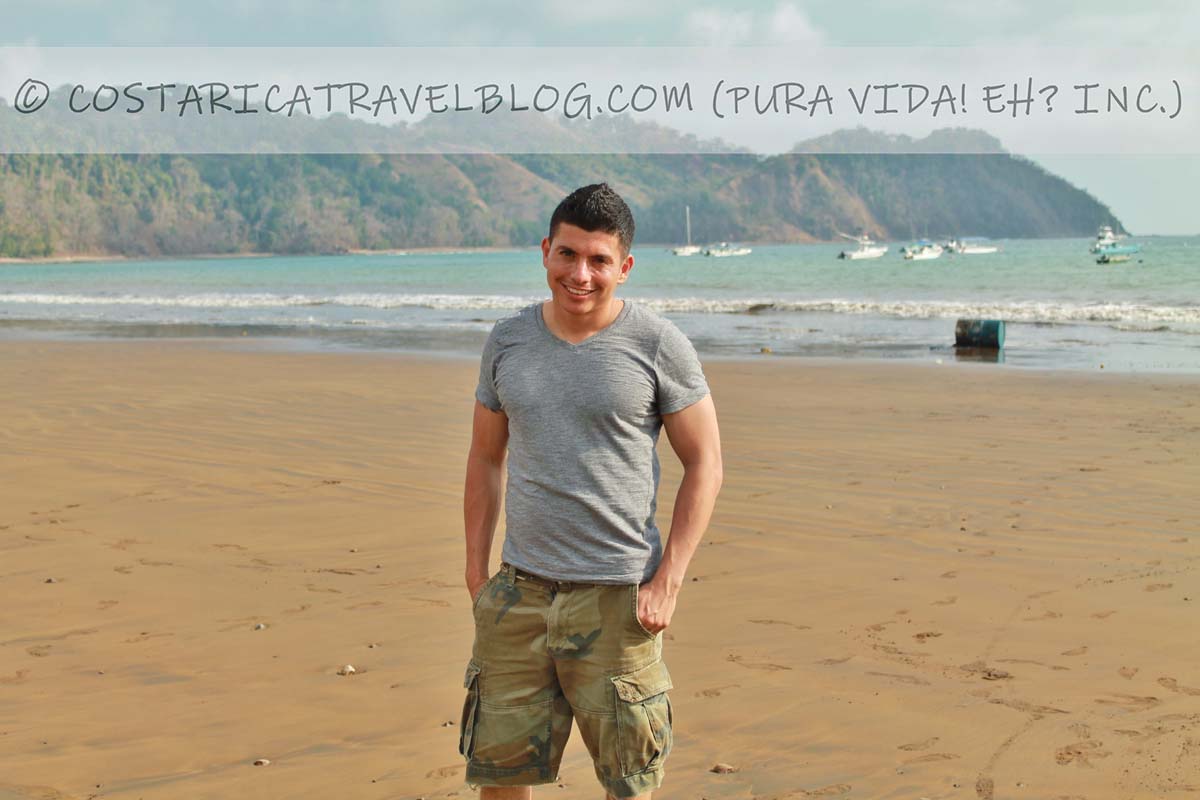
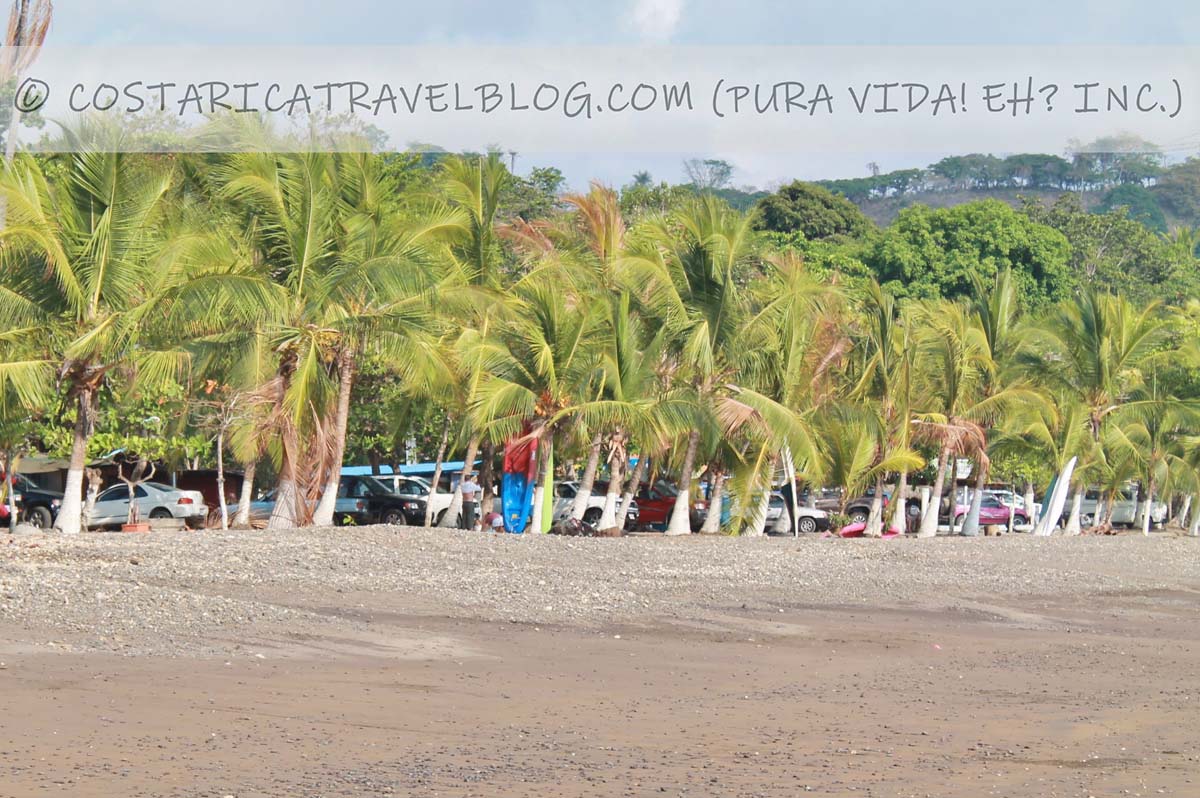
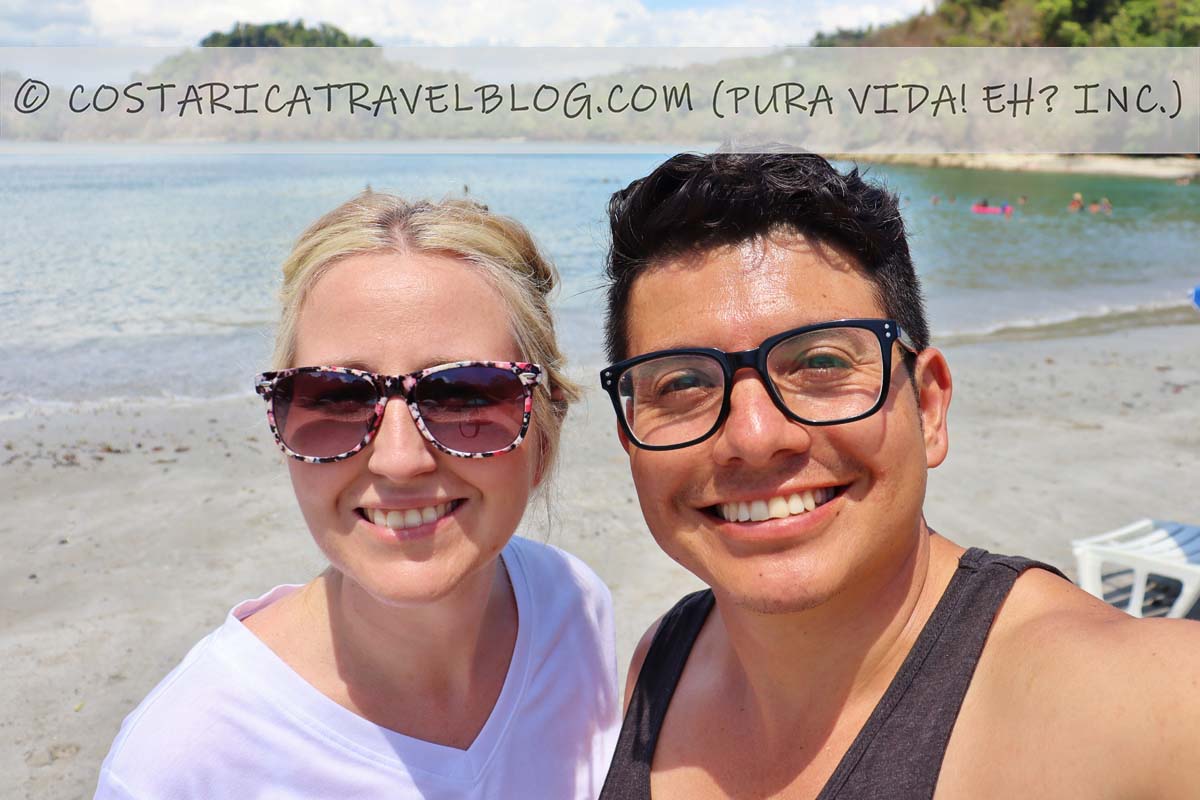

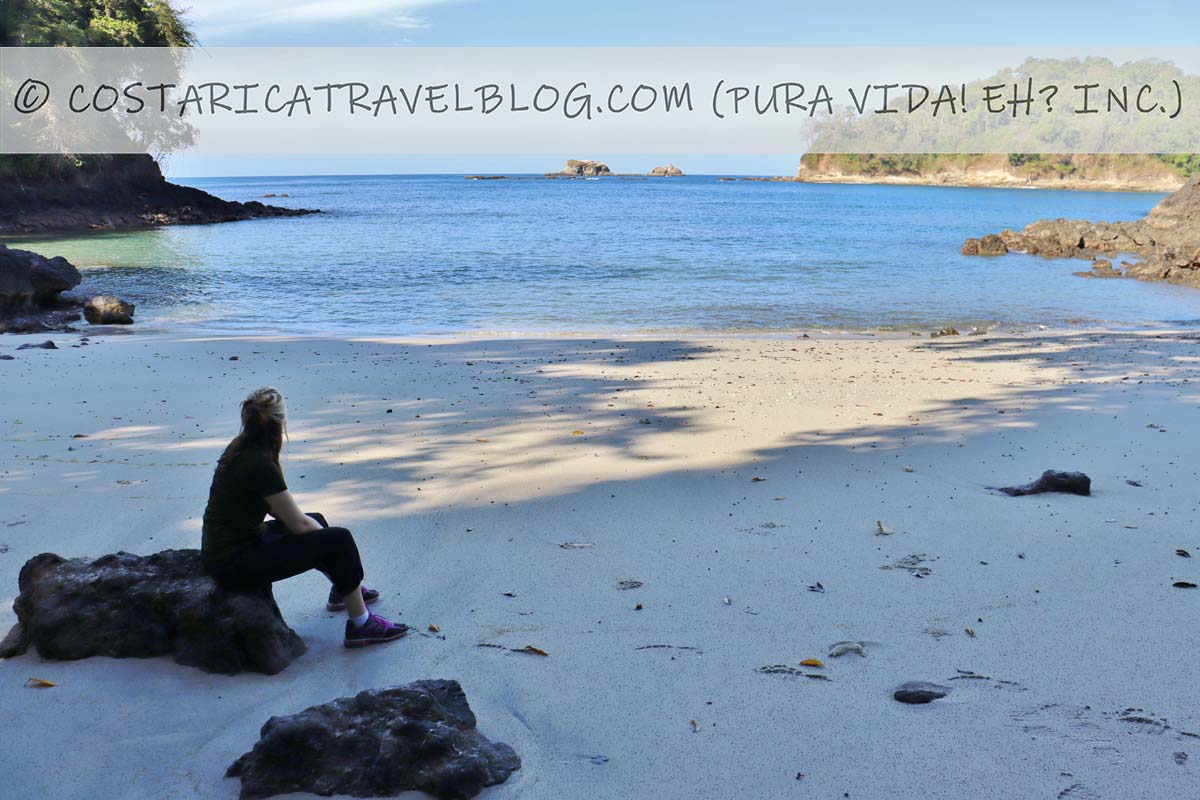
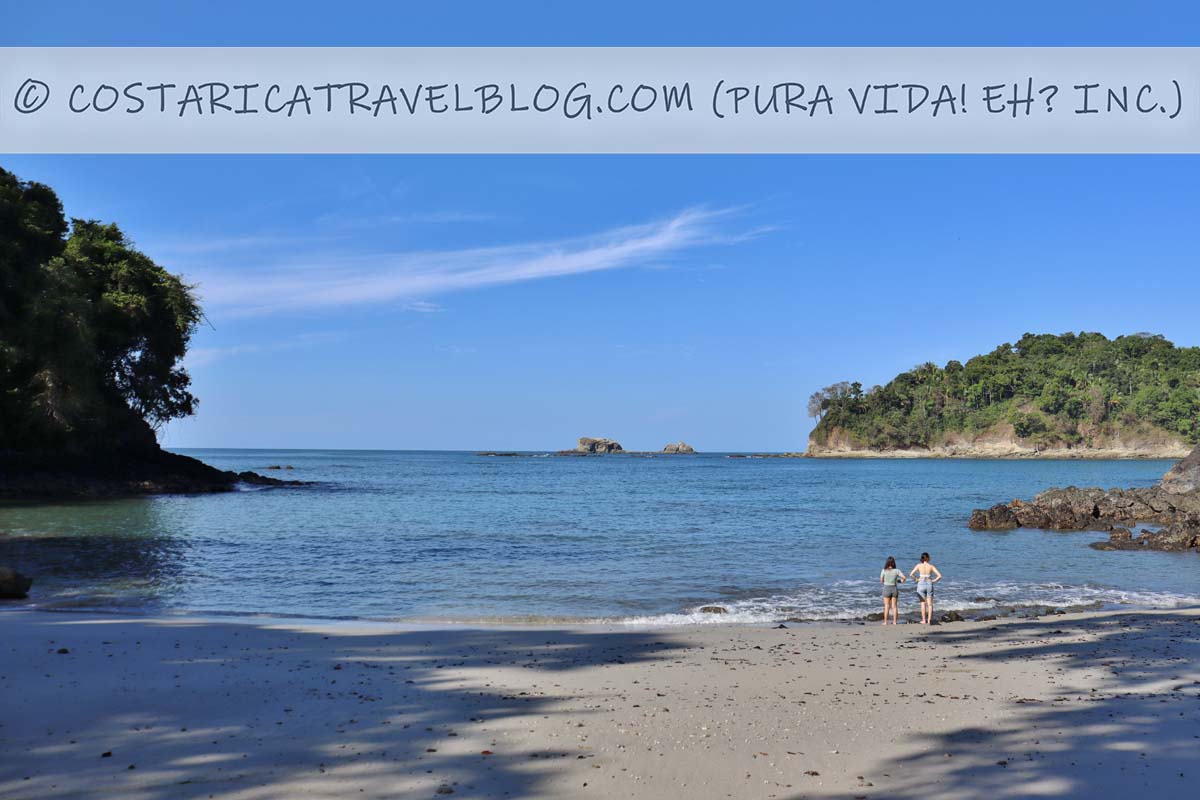
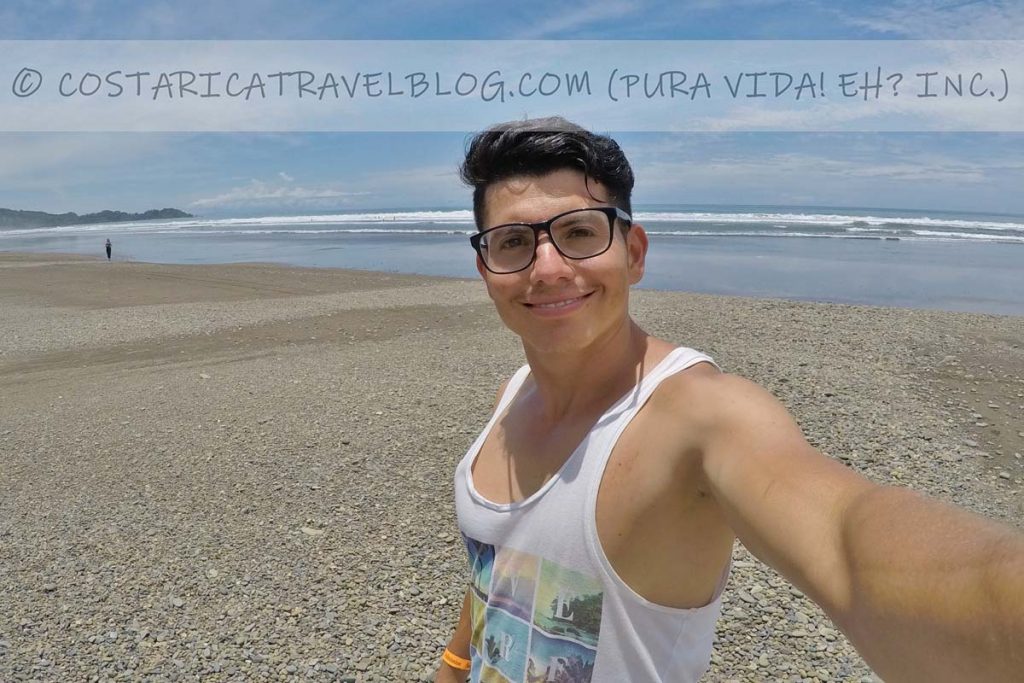
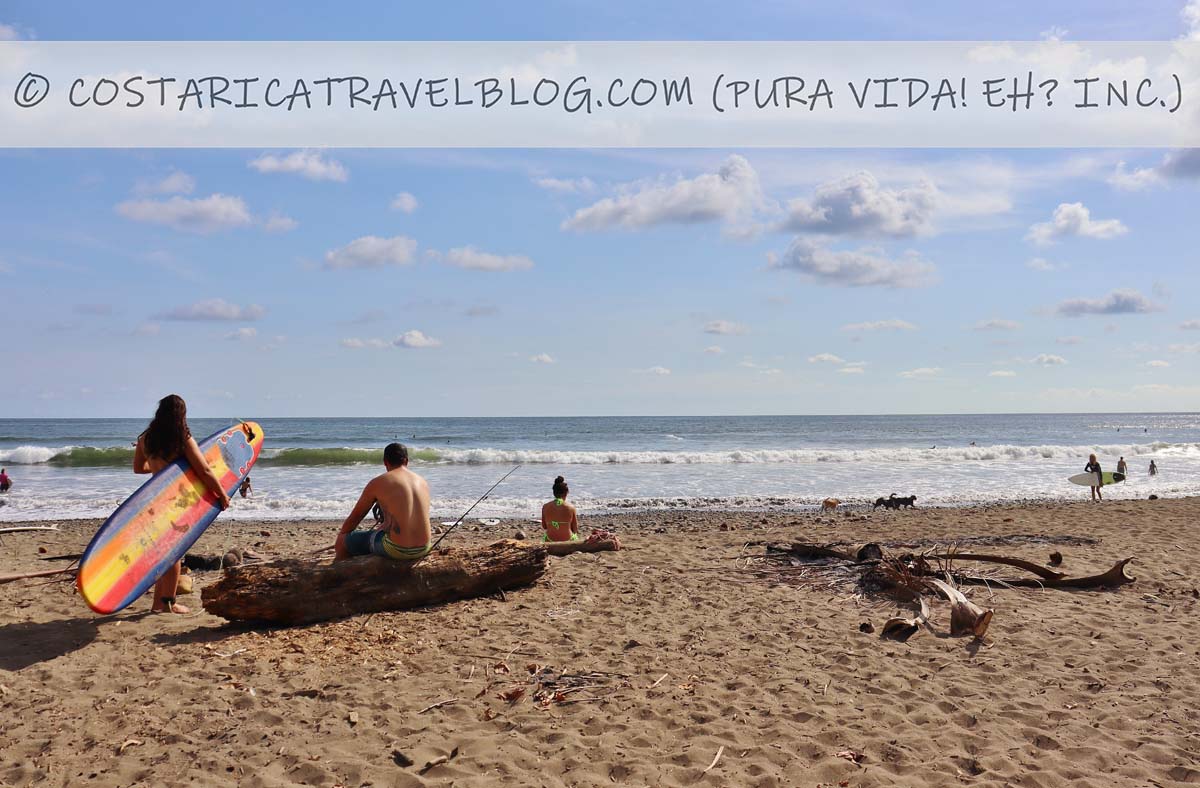

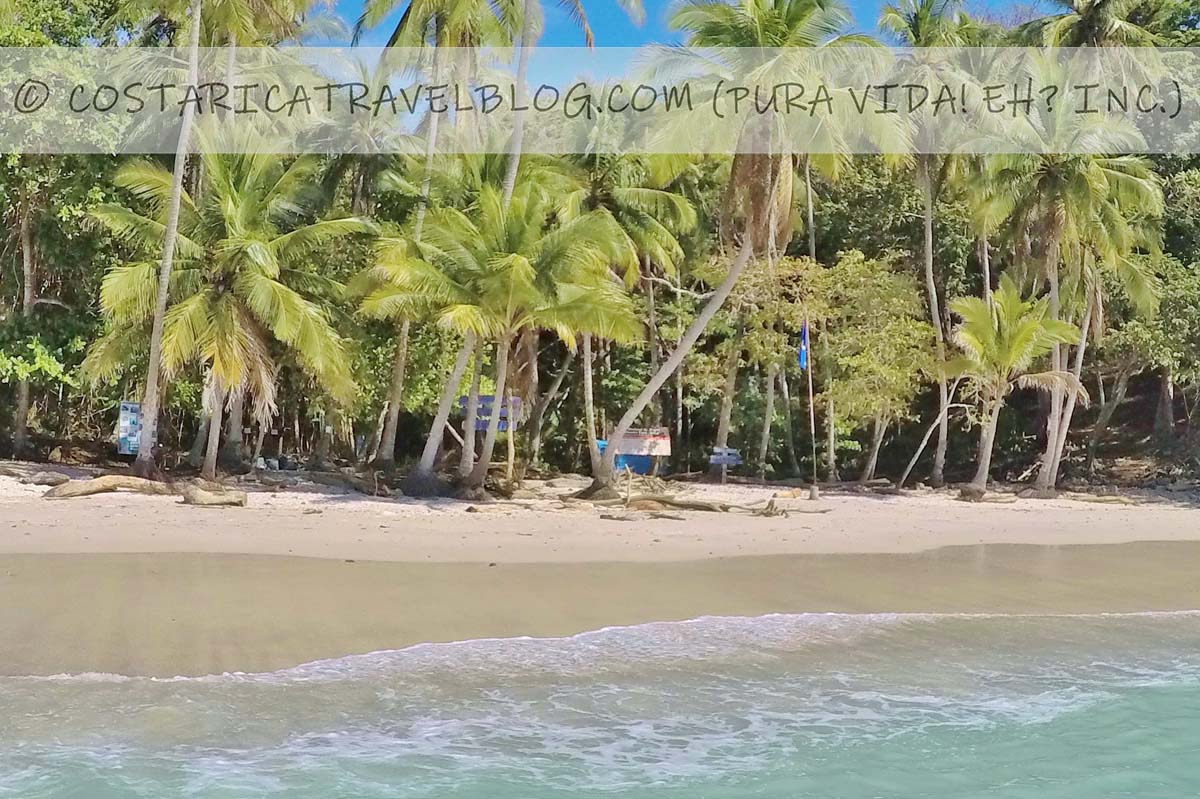
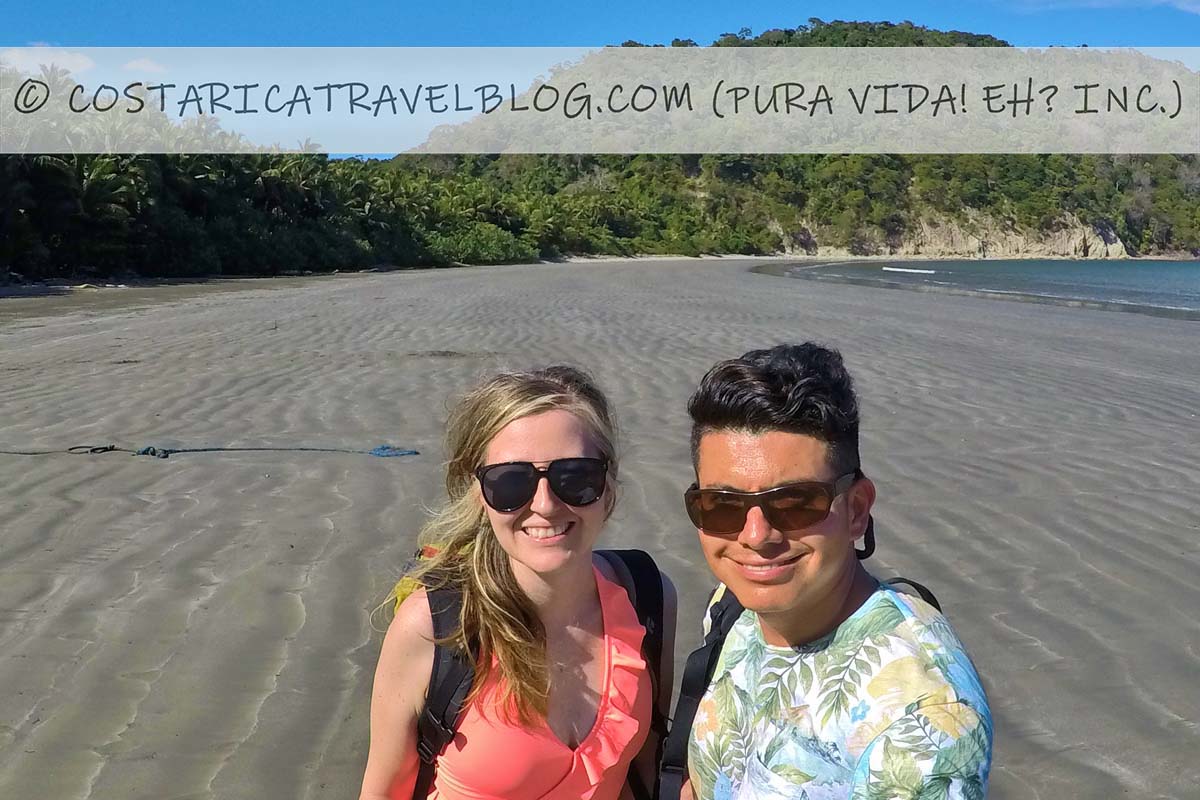

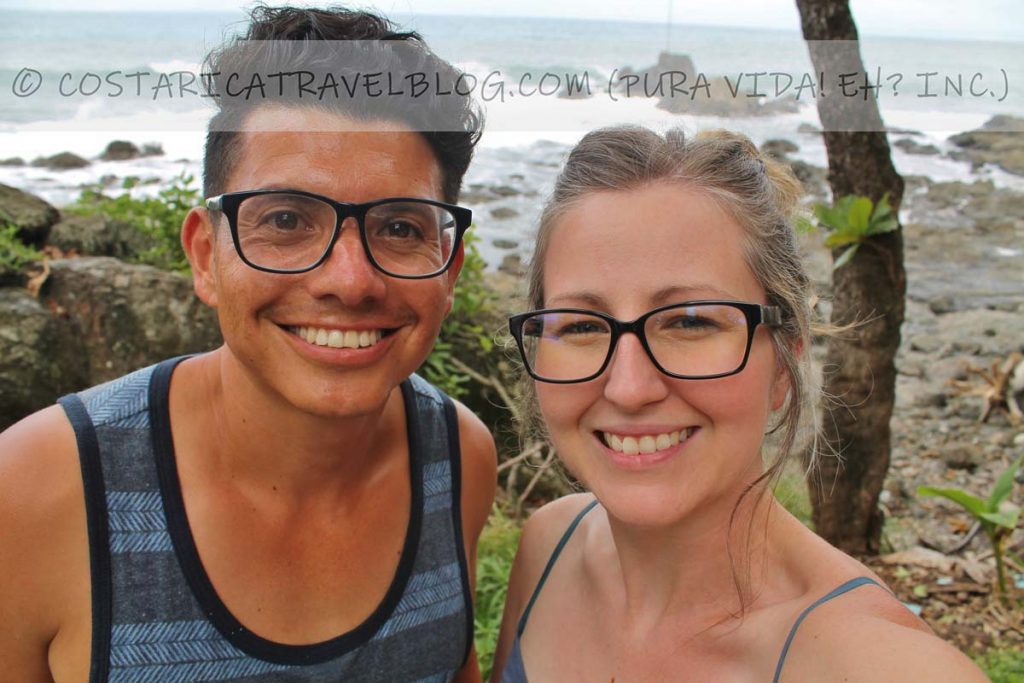
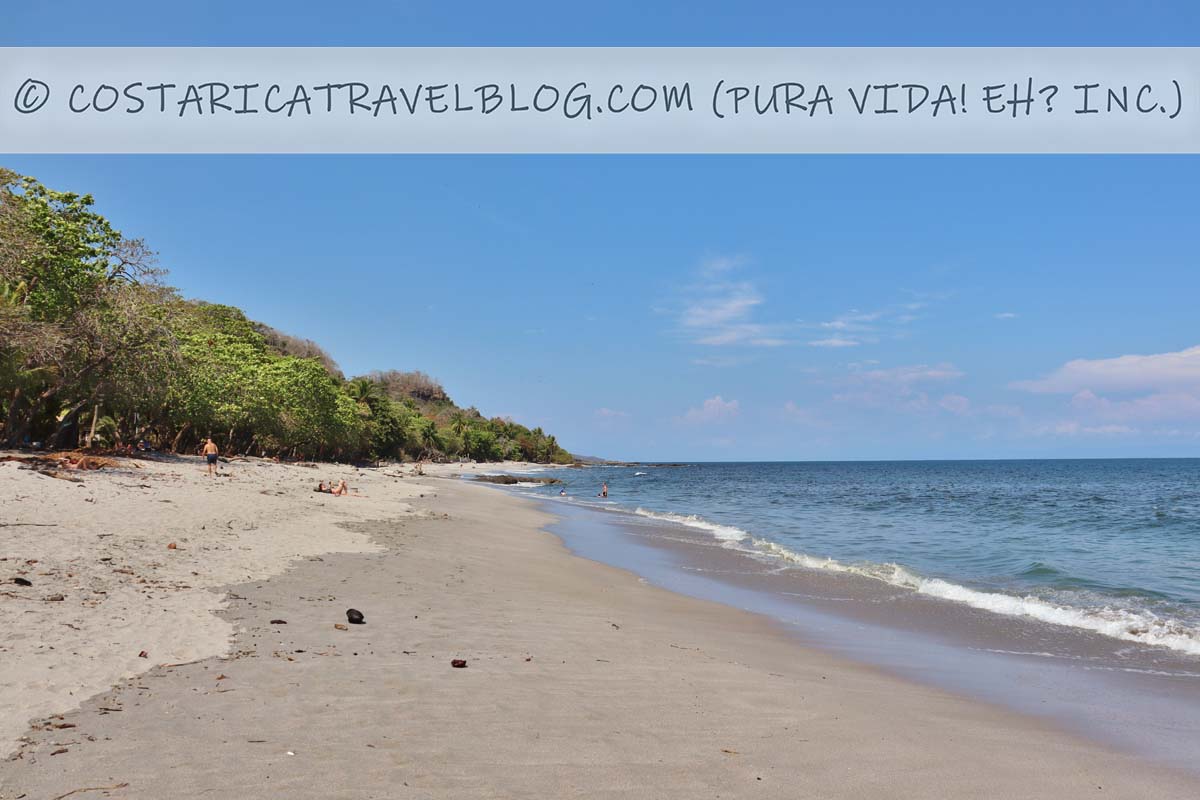
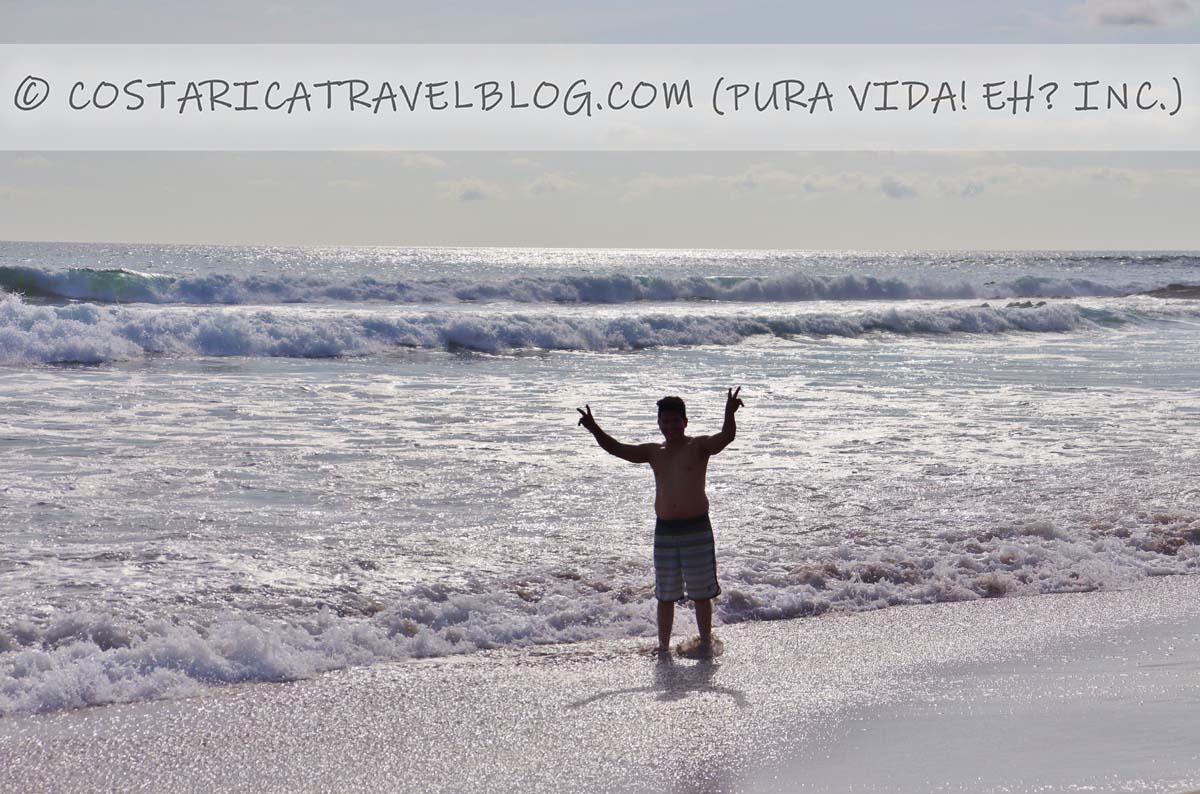
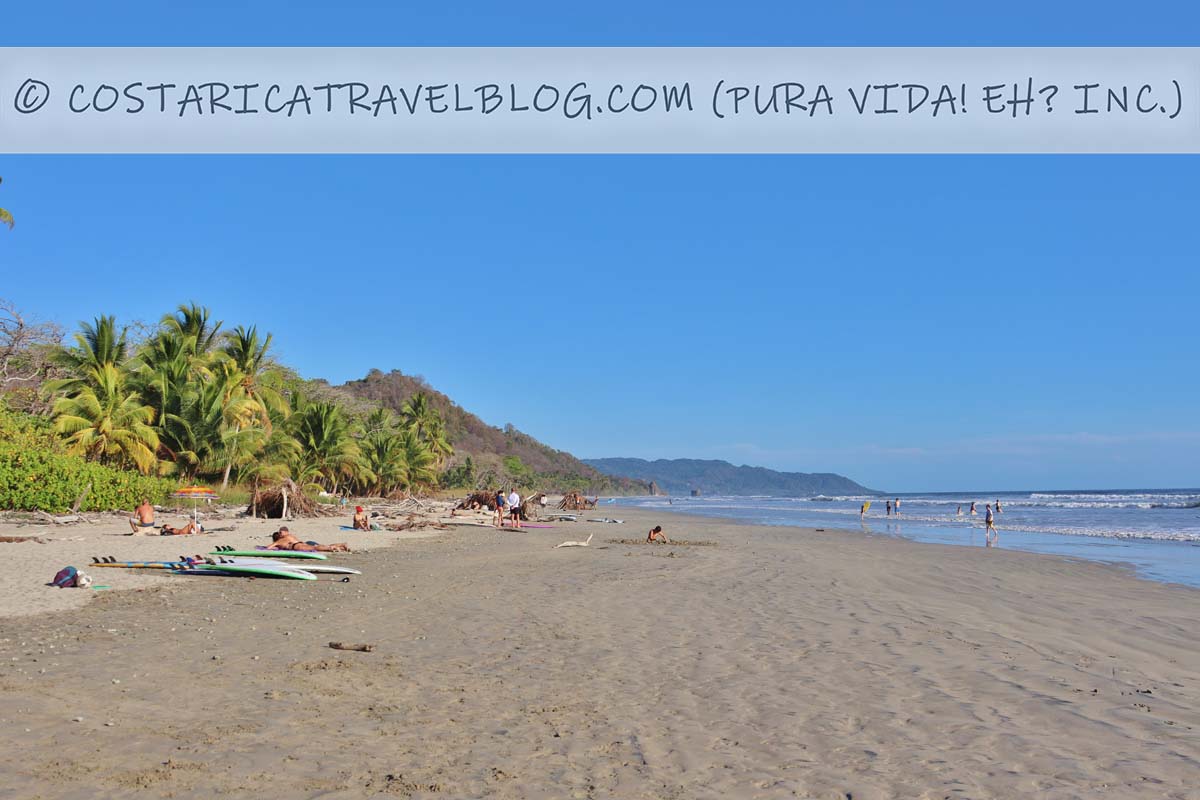
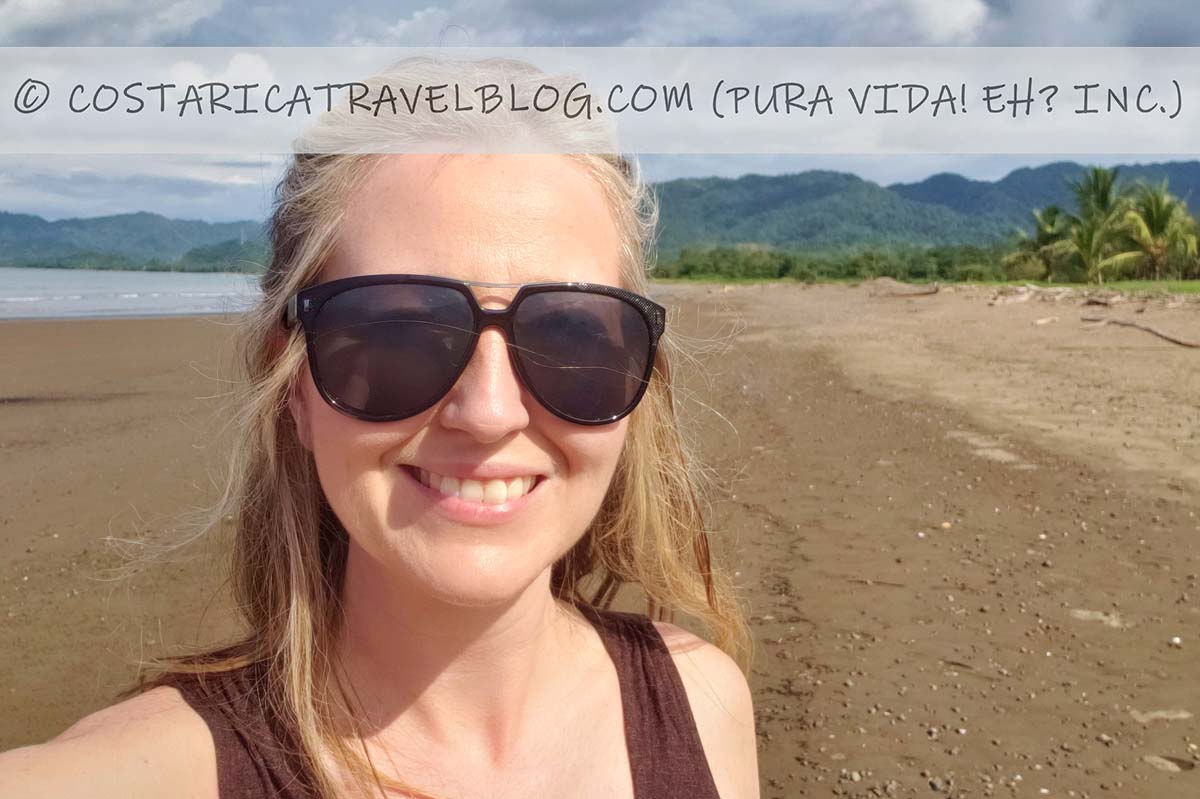
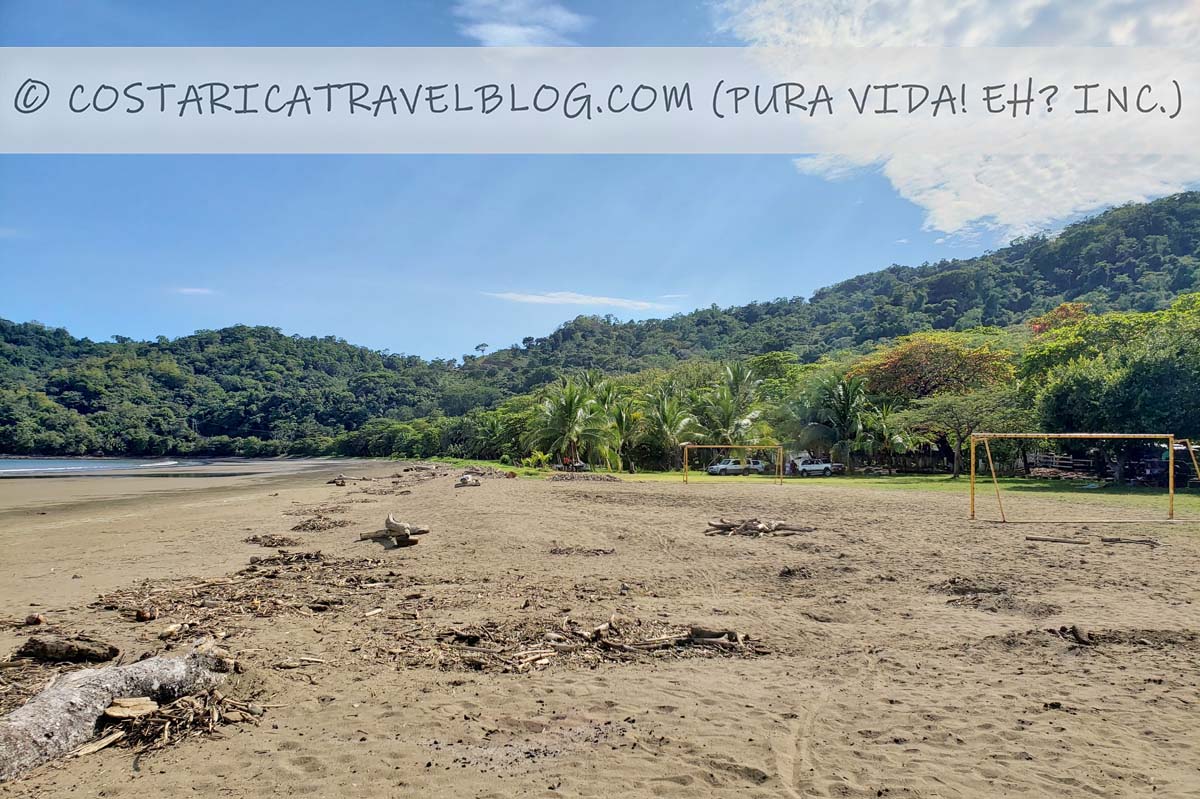




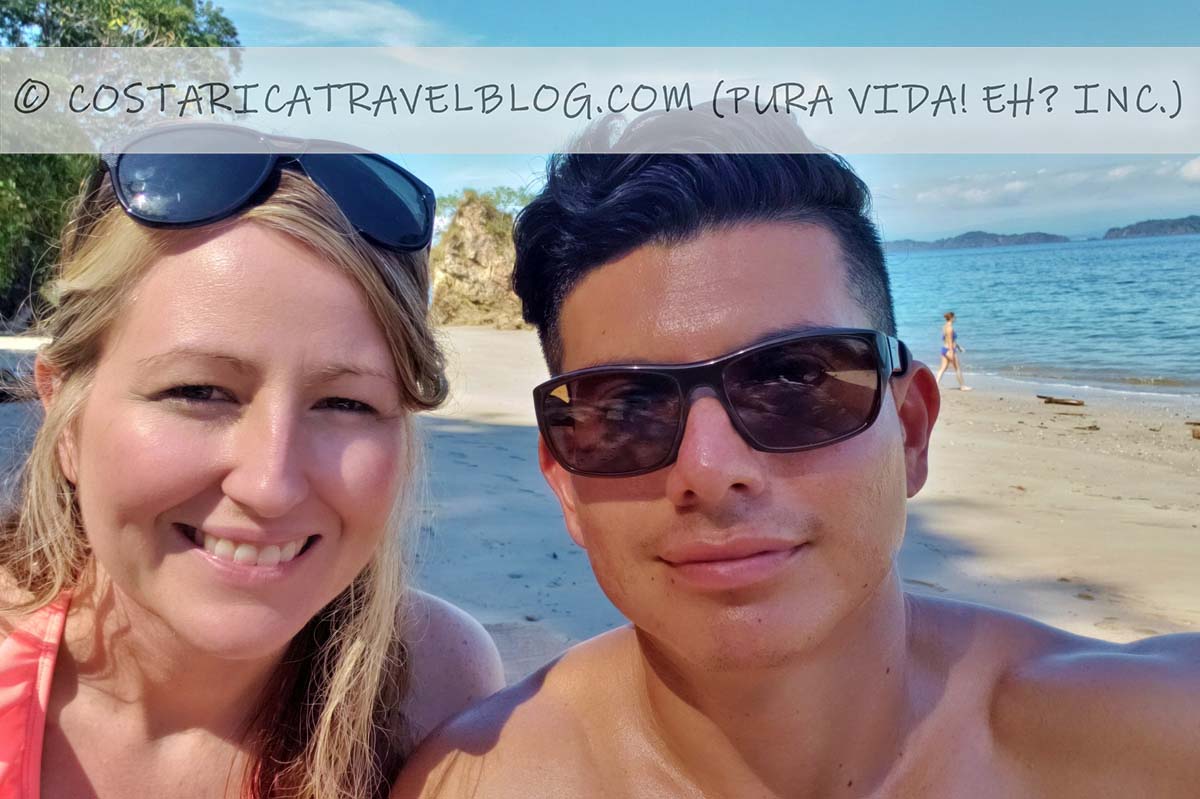
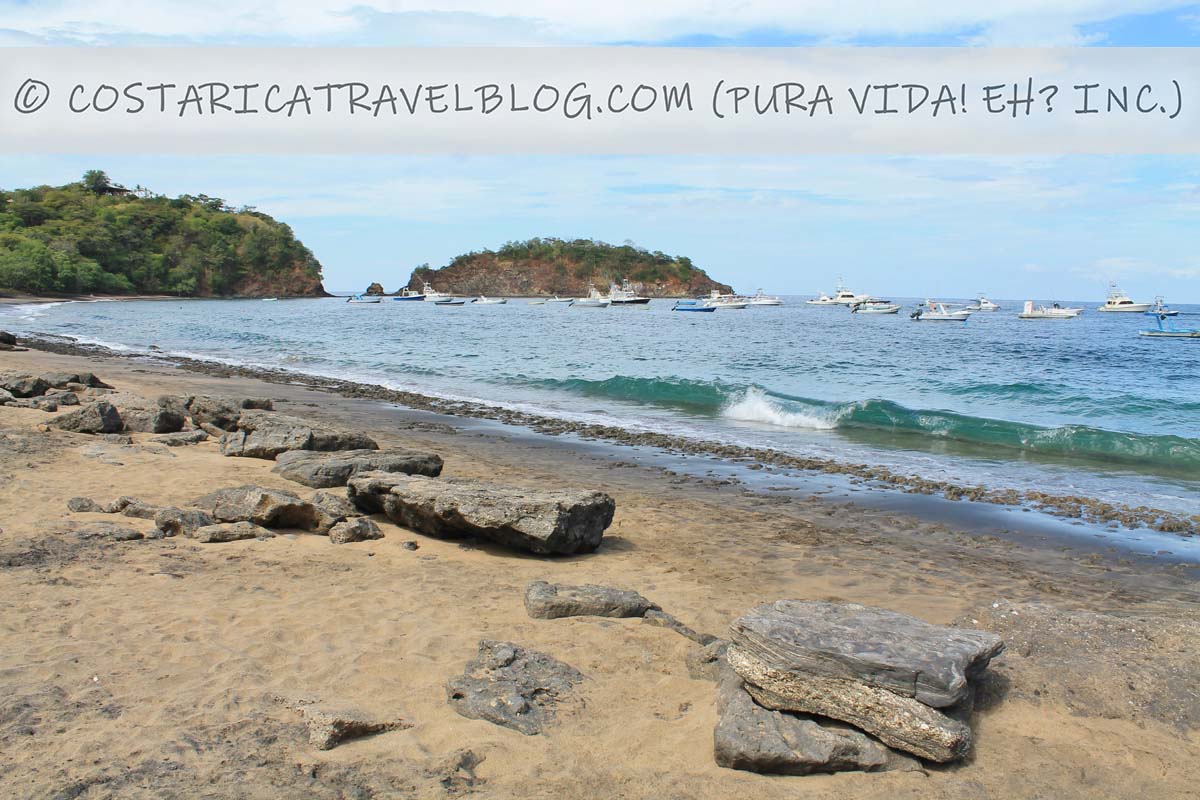
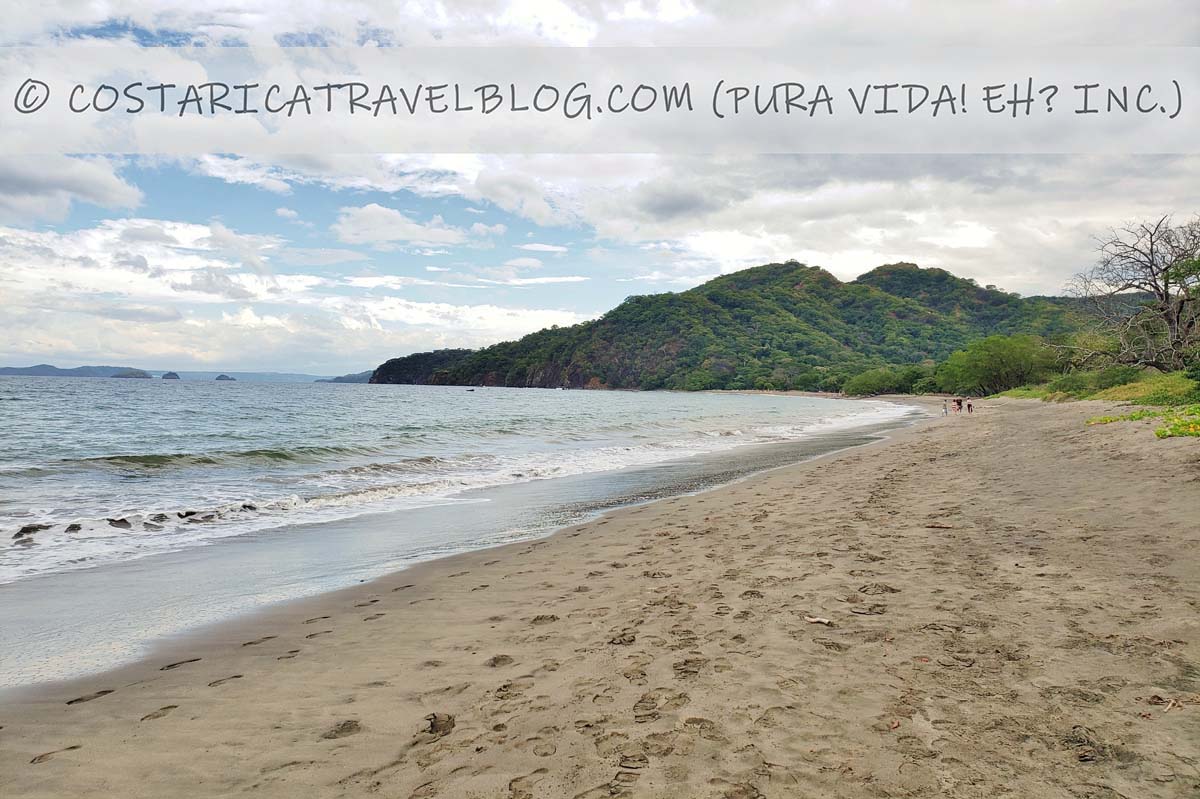
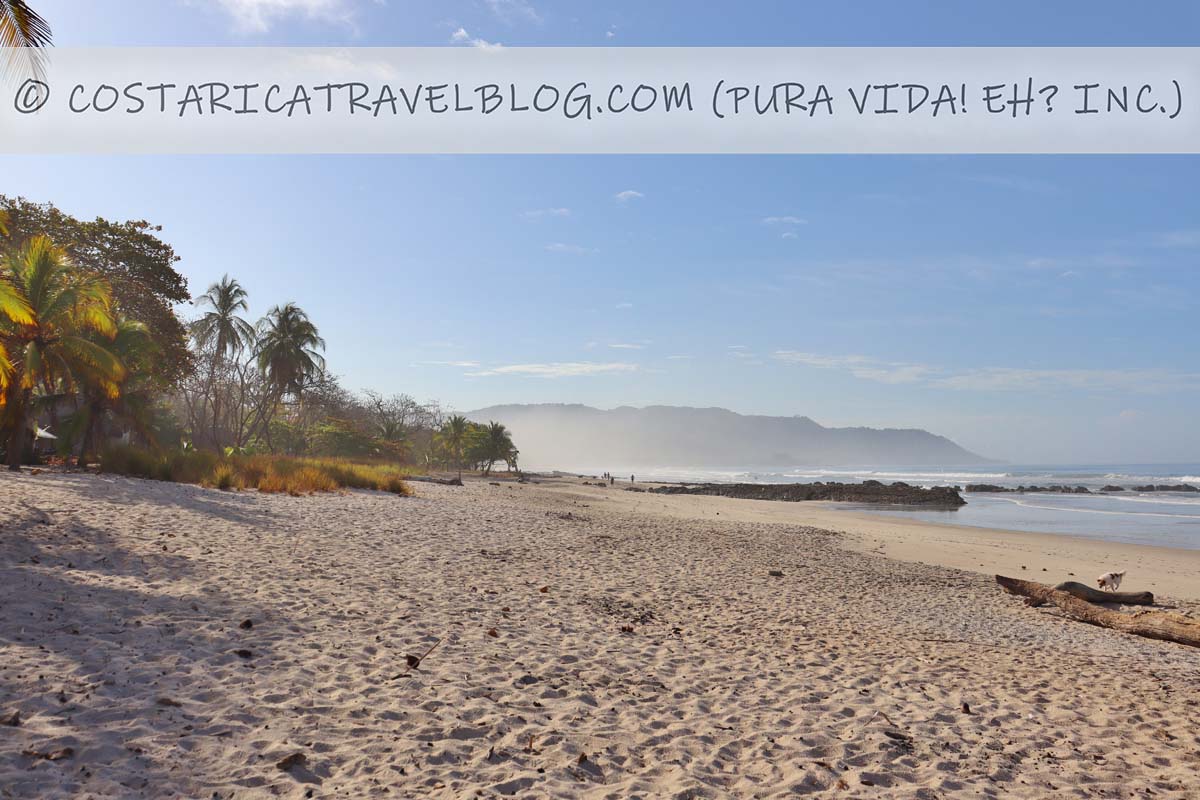
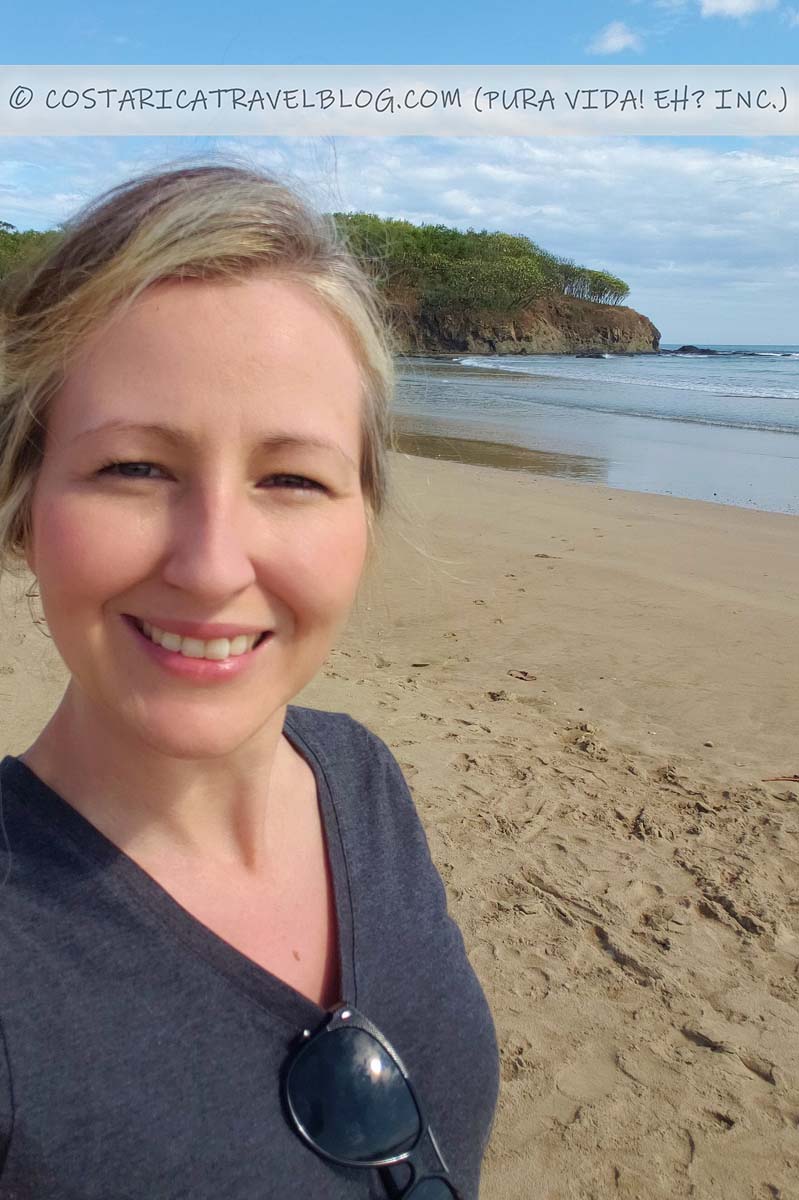
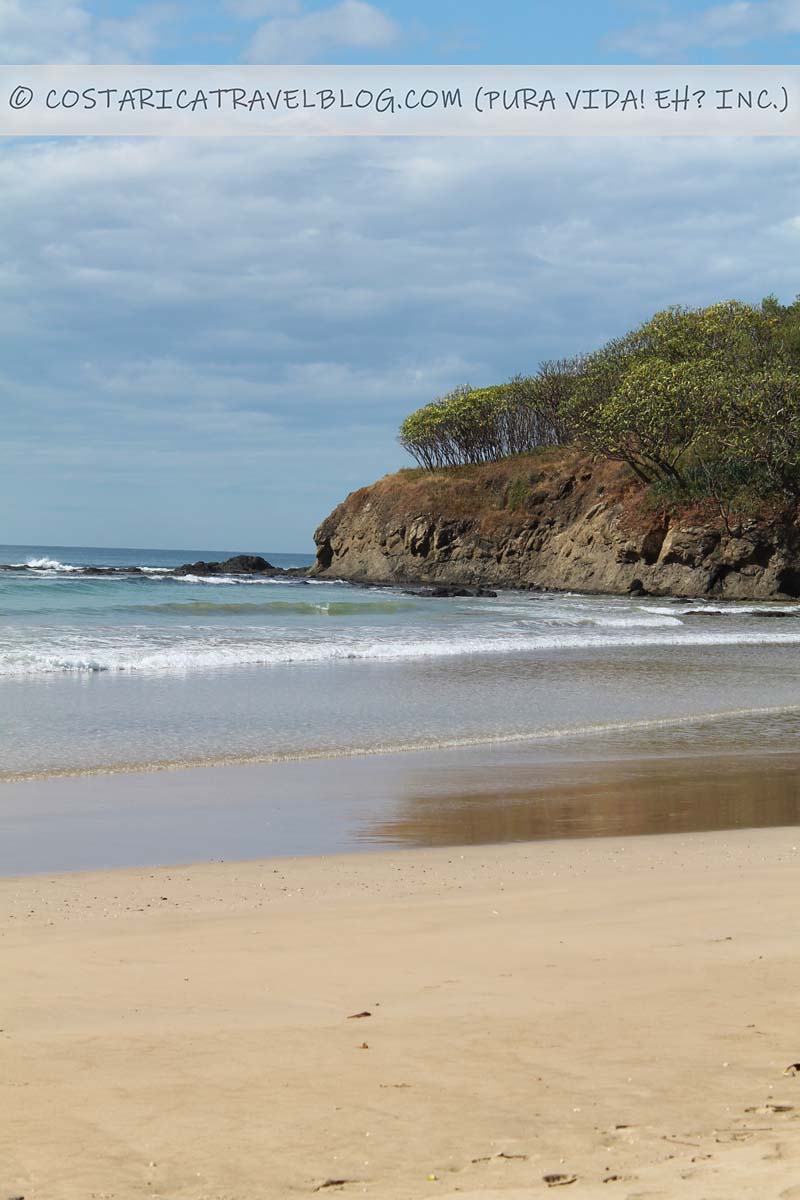

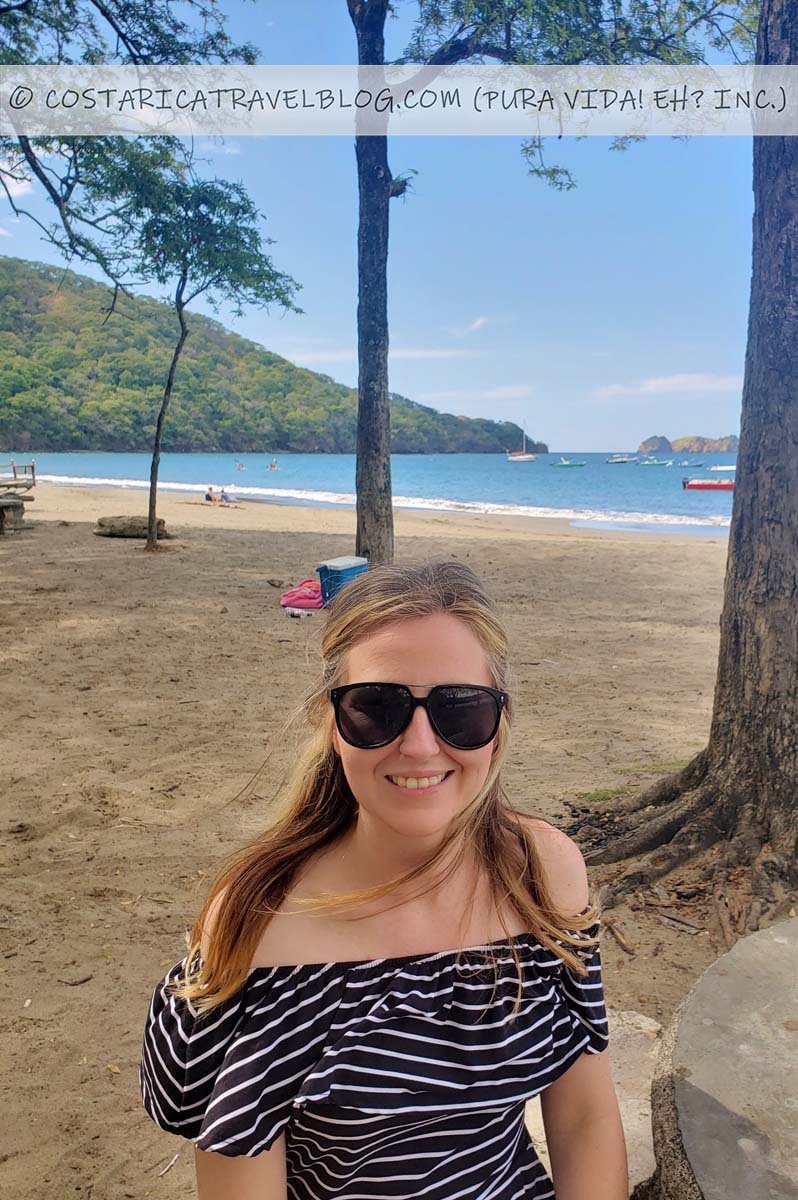


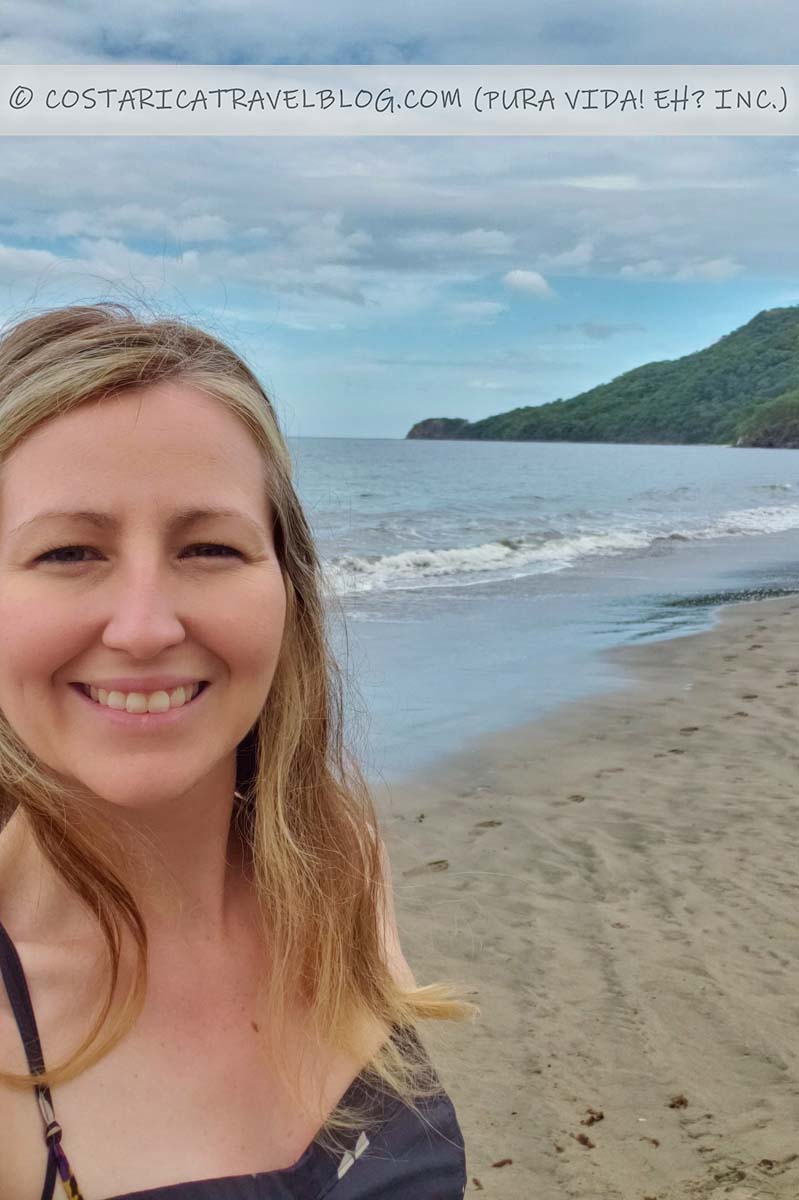


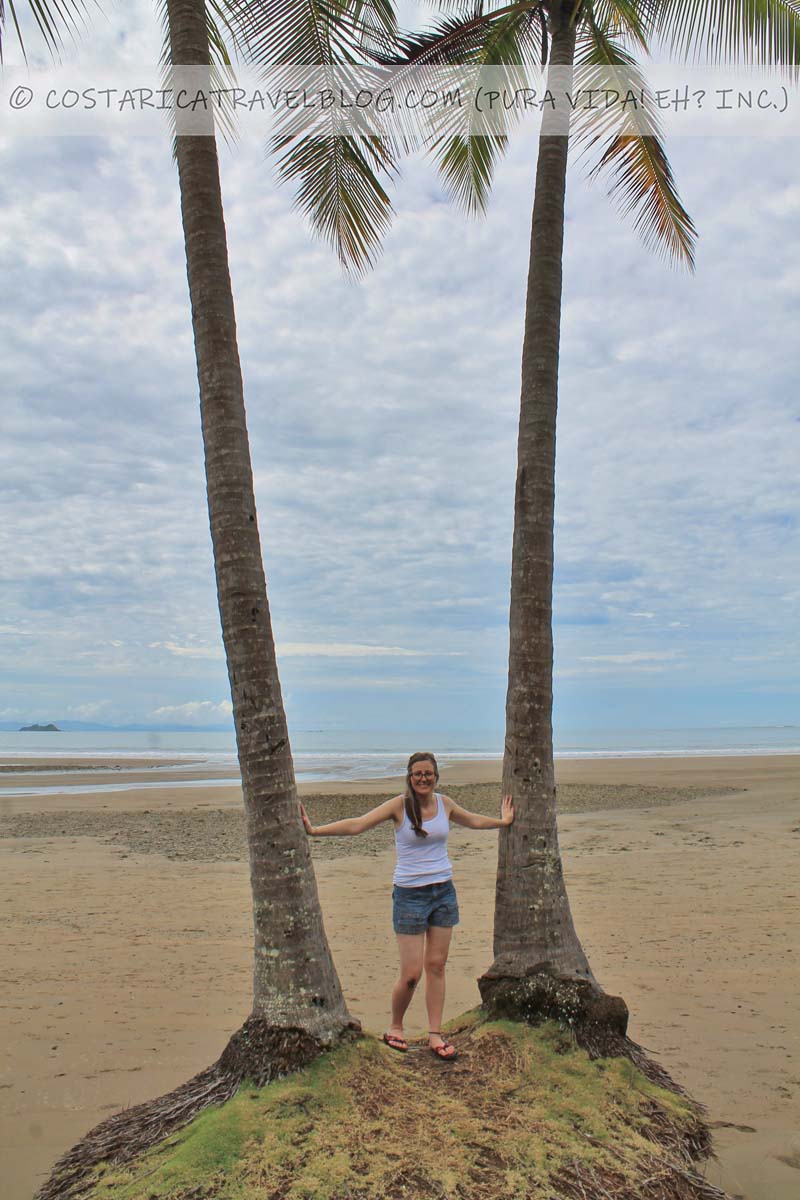
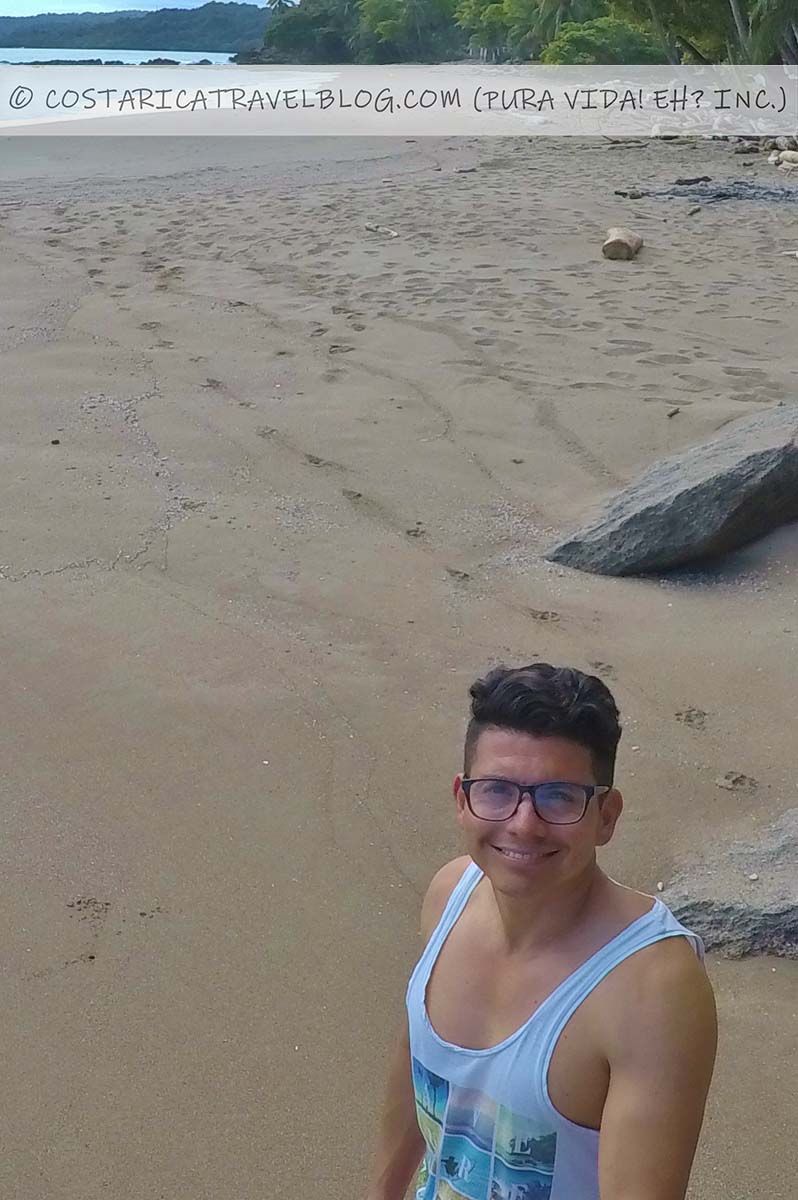

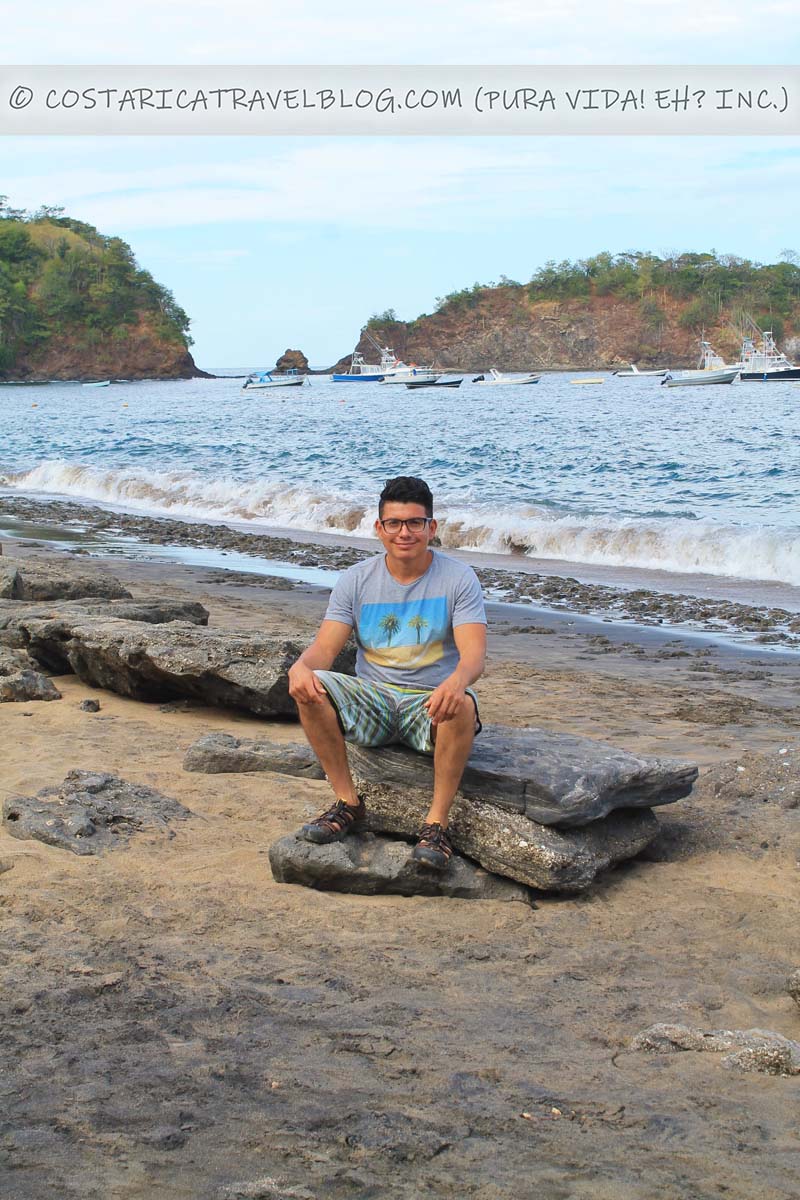
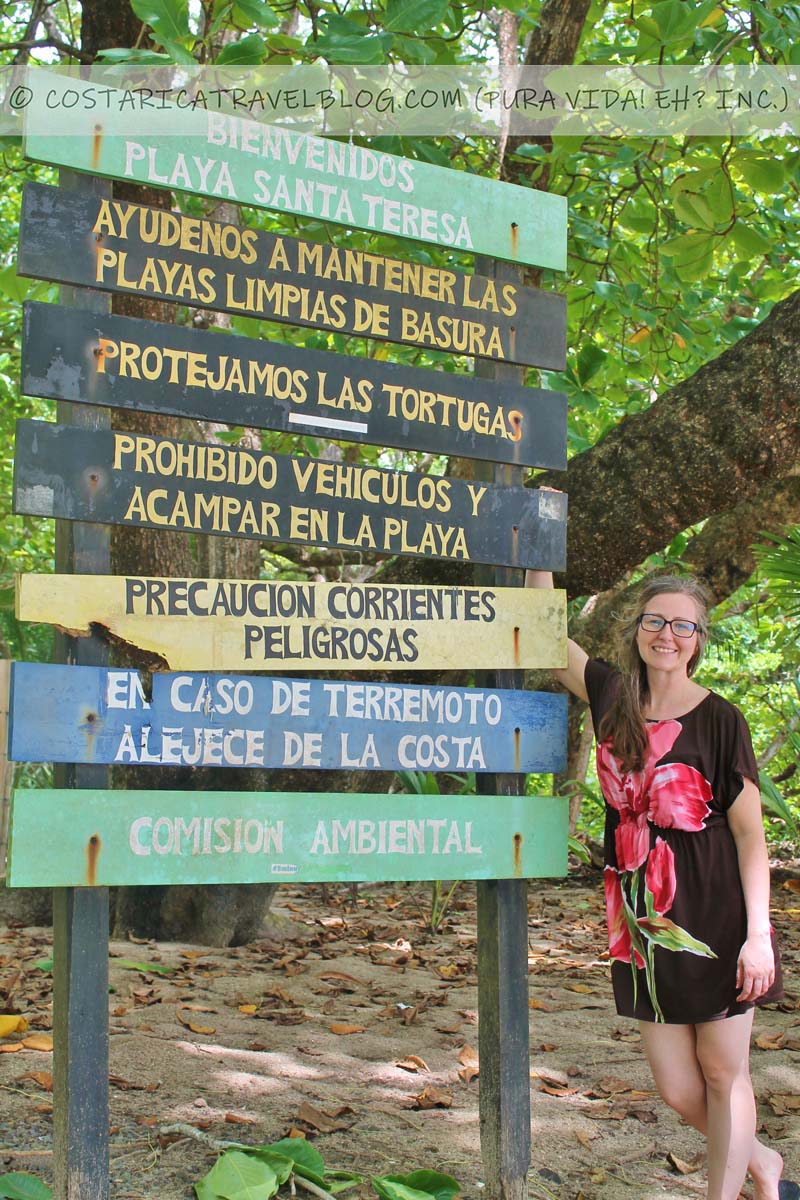

QUESTION TO COMMENT ON: Would the fact that a beach received a blue flag be enough for you to spend time at that beach? Which blue flag beaches have you experienced?
Pura vida! 🙂

Hey, Costa Rica Travel Blog reader, thank you for visiting and reading our blog! We're truly grateful for your time and preference.
Do you know that your spam-free reading experience is most important to us? Unlike some other Costa Rica blogs, we do not to sell your personal information, and we choose not to display ads, sponsored content, or affiliate marketing on our blog so we can keep your visit as distraction- and junk-free as possible. Because we prioritize your privacy, we don't earn money when you visit us, when you sign up for our e-course, or when you click on our links, which means the time and work we put into this blog—including its 300+ articles—is entirely voluntary! If you find our content valuable, and you'd like to thank us for making the trip-planning process easier and your Costa Rica vacation more enjoyable, please consider making a small donation ($1, $2, $3, or an amount of your choosing) to our blog. Doing so is a great way to pat us on the back if you feel we deserve it. 😊 Pura vida, amigos!
Click on the button above to donate through PayPal. (If you cannot see the PayPal button above, click here.) A PayPal account is not required to make a donation; credit and debit cards are also accepted. PayPal donations are confidential; we never see your payment details.
Love our blog? Check out our other Costa Rica-related projects, too:

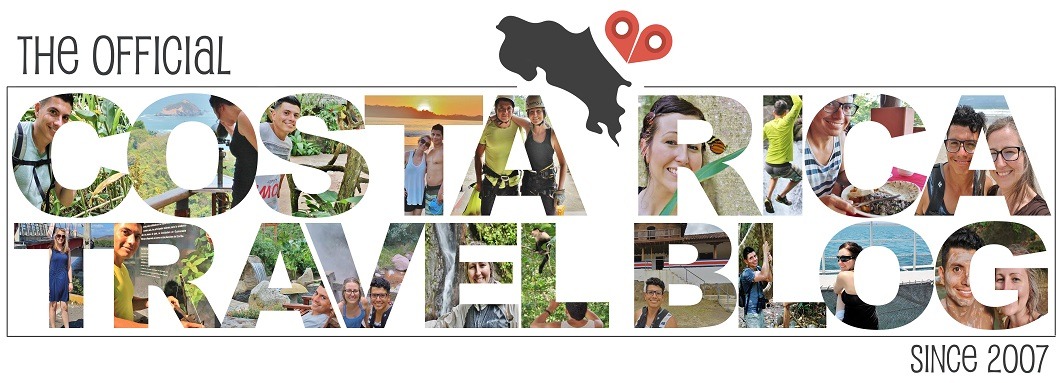

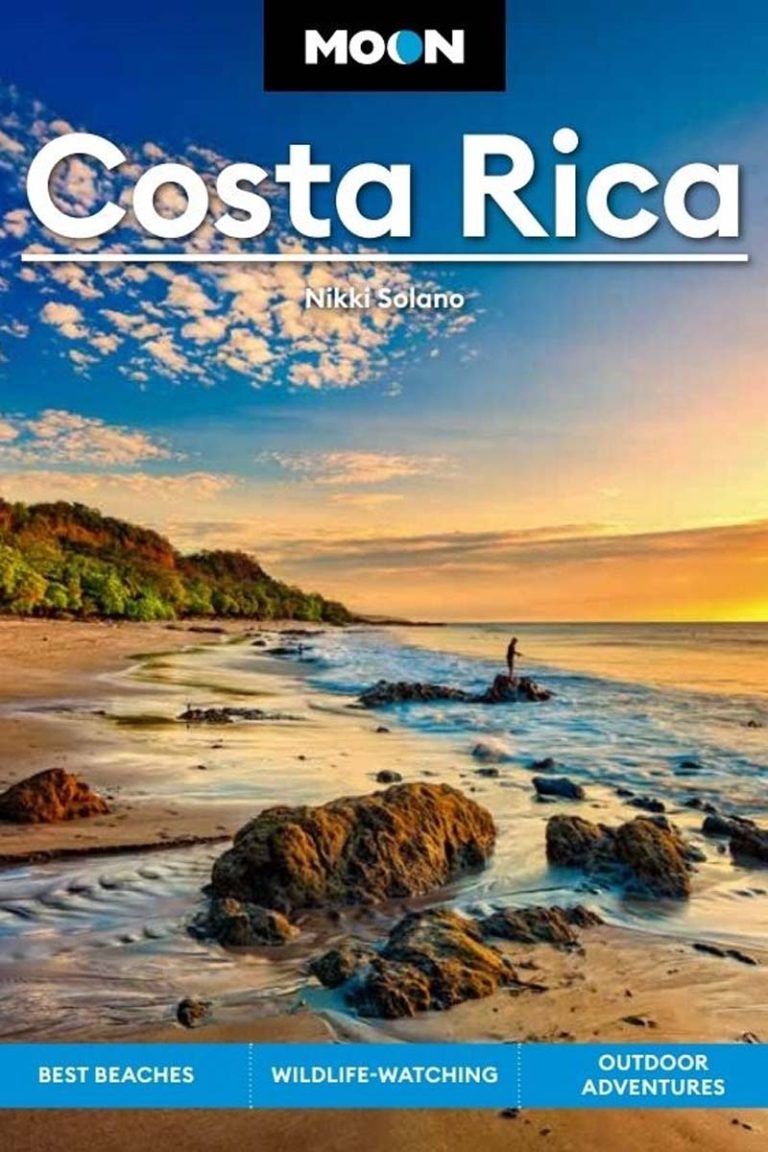
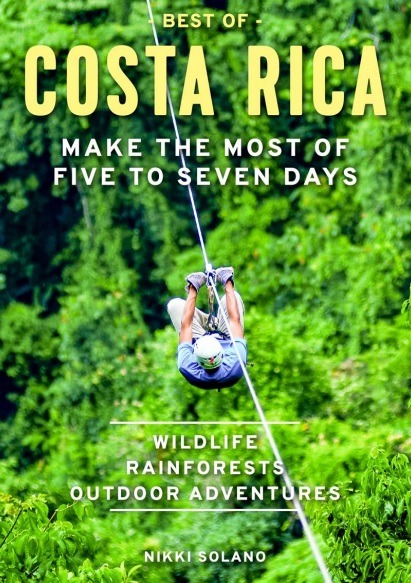

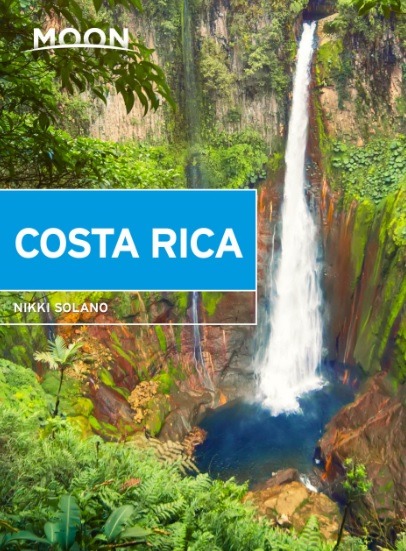











Tagged: beaches, blue flag, costa rica travel, costa rica travel tips, costa rica vacation, nature, tourism, travel, travel guide, travel tips, vacation